Inclusive Šibenik: Šibenik's Warm Welcome Makes it a City For Everyone
December 3, 2021 – On International Day of Disabled Persons, we take a look at how inclusive Šibenik makes this a welcoming city for everyone
Lying on a truly unique stretch of Croatia's coast, the city of Šibenik is famous for many things.
History, heritage and events
 Barone Fortress © Šibenik Tourist Board
Barone Fortress © Šibenik Tourist Board
Sitting above the city are three fortresses. Historically, they defended Šibenik from attack made by any possible direction. There's another fortress below the city, in the middle of St. Anthony's channel. It guards the entrance to Šibenik from the sea and is a UNESCO protected heritage site. It's not the only one here.
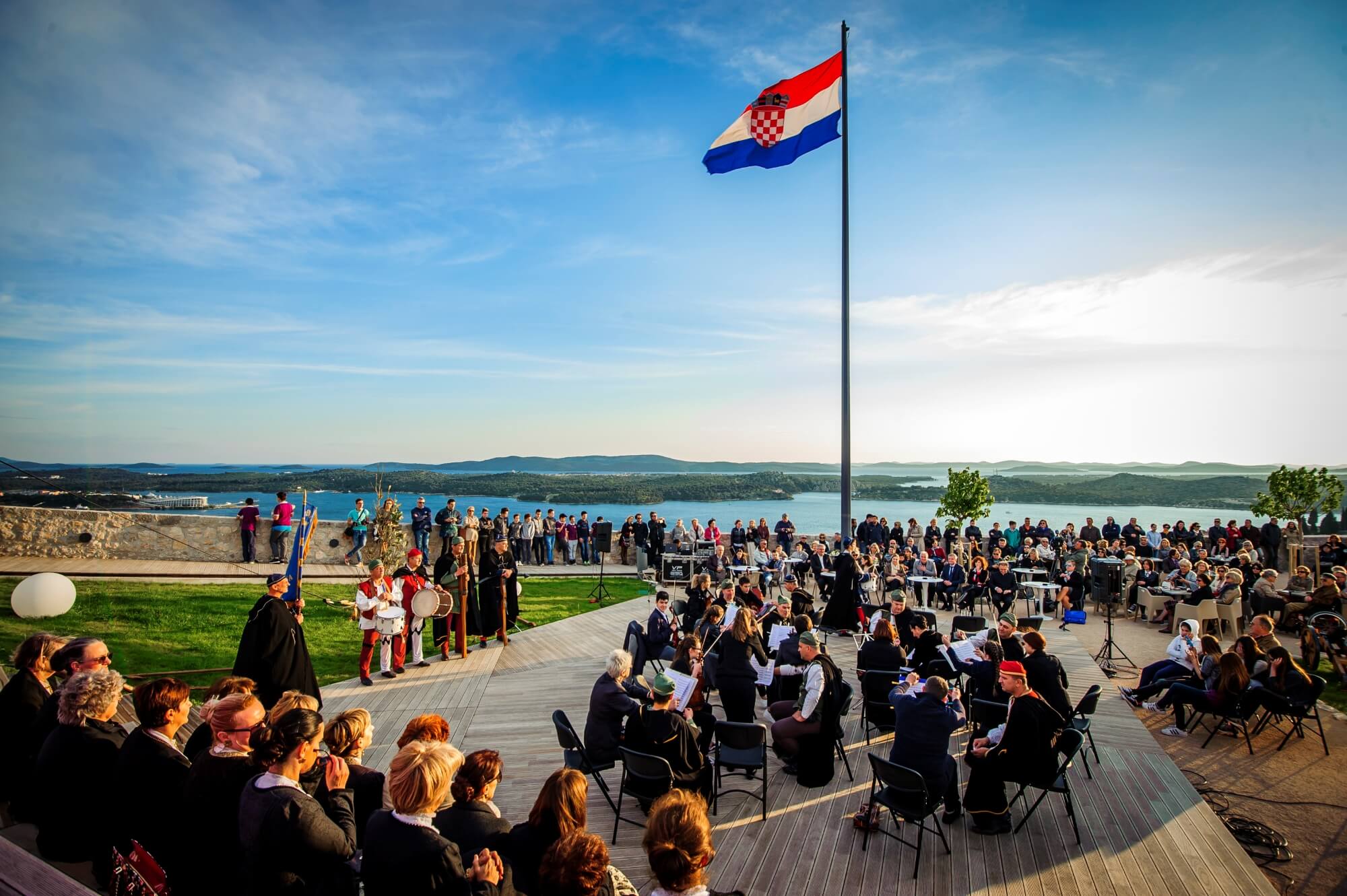
Šibenik's spectacular Cathedral of St. James is also a UNESCO heritage site. Understandably so. It's an architectural treasure. These five titanic landmarks are cornerstones of Šibenik Old Town. Its historic streets are among the most charming and atmospheric in Croatia. During warmer months, Šibenik's renowned music, children's, dance, theatre and cinema events spill out onto these streets.
Special gastronomy
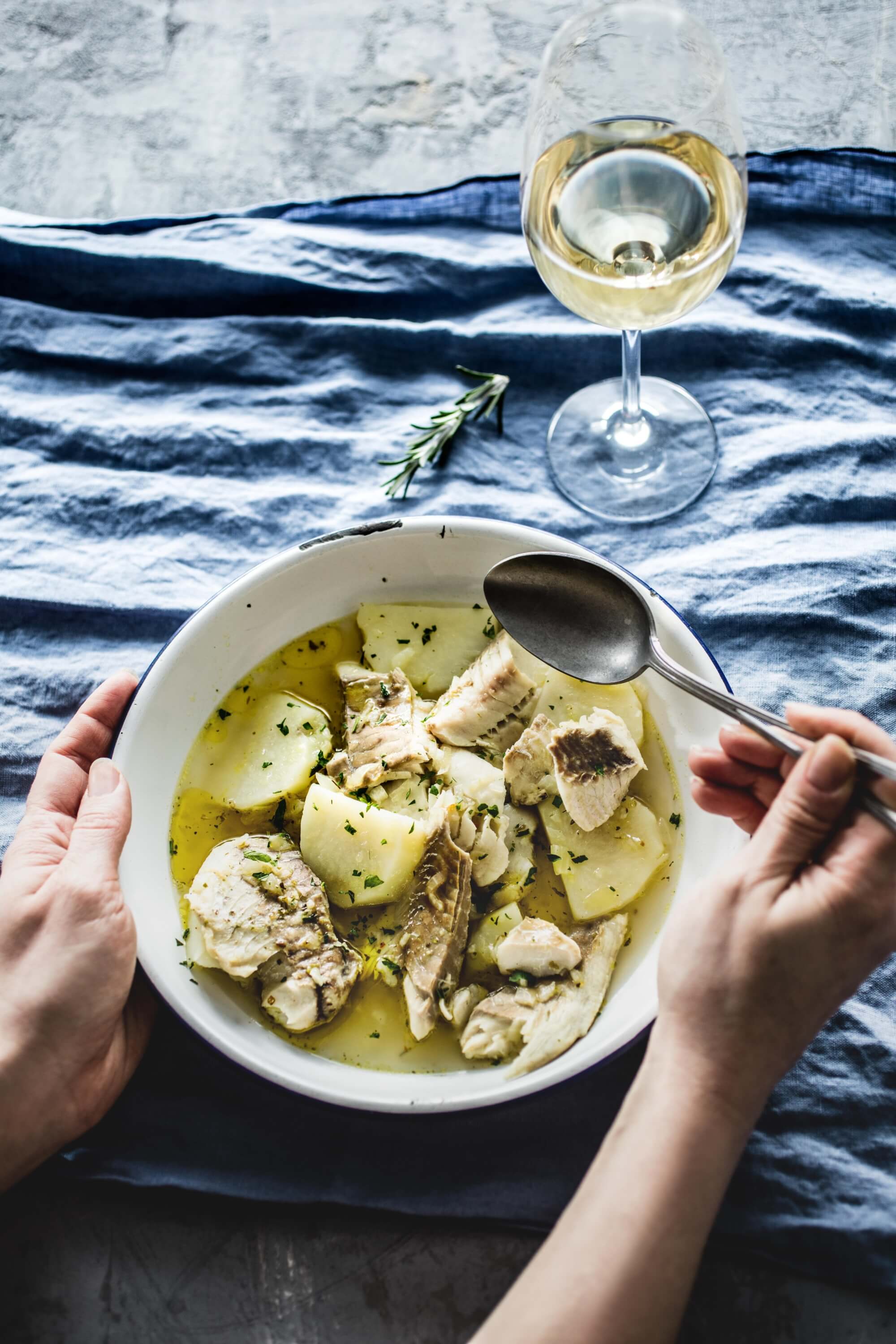 Inclusive Šibenik: Bakalar (salt cod), served traditionally with potatoes © Maja Danica Pečanić
Inclusive Šibenik: Bakalar (salt cod), served traditionally with potatoes © Maja Danica Pečanić
Šibenik has long been known for its classic Mediterranean brunches – marenda. For as long as anyone can remember, these simple yet tasty dishes have been enjoyed casually in the back streets and stone-paved alleys of Šibenik Old Town.
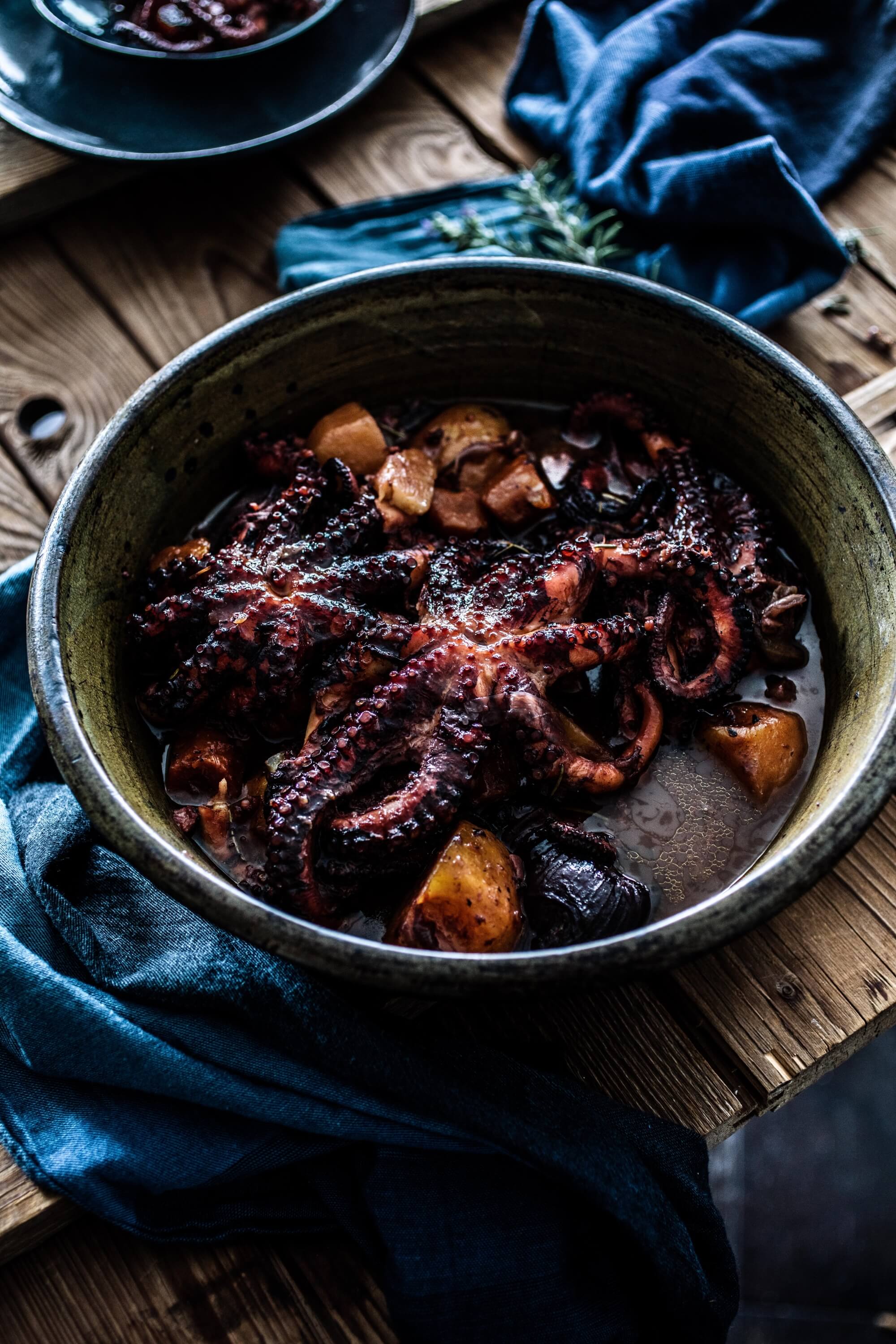 Inclusive Šibenik: Octopus © Maja Danica Pečanić
Inclusive Šibenik: Octopus © Maja Danica Pečanić
Consistently voted Croatian Restaurant of the Year, the international reputation of Šibenik restaurant Pelegrini received a boost in 2018 when it was awarded a Michelin star. Not only does it still hold the award, but its presence in the city has also helped raise the bar for fine dining throughout Šibenik's eateries.
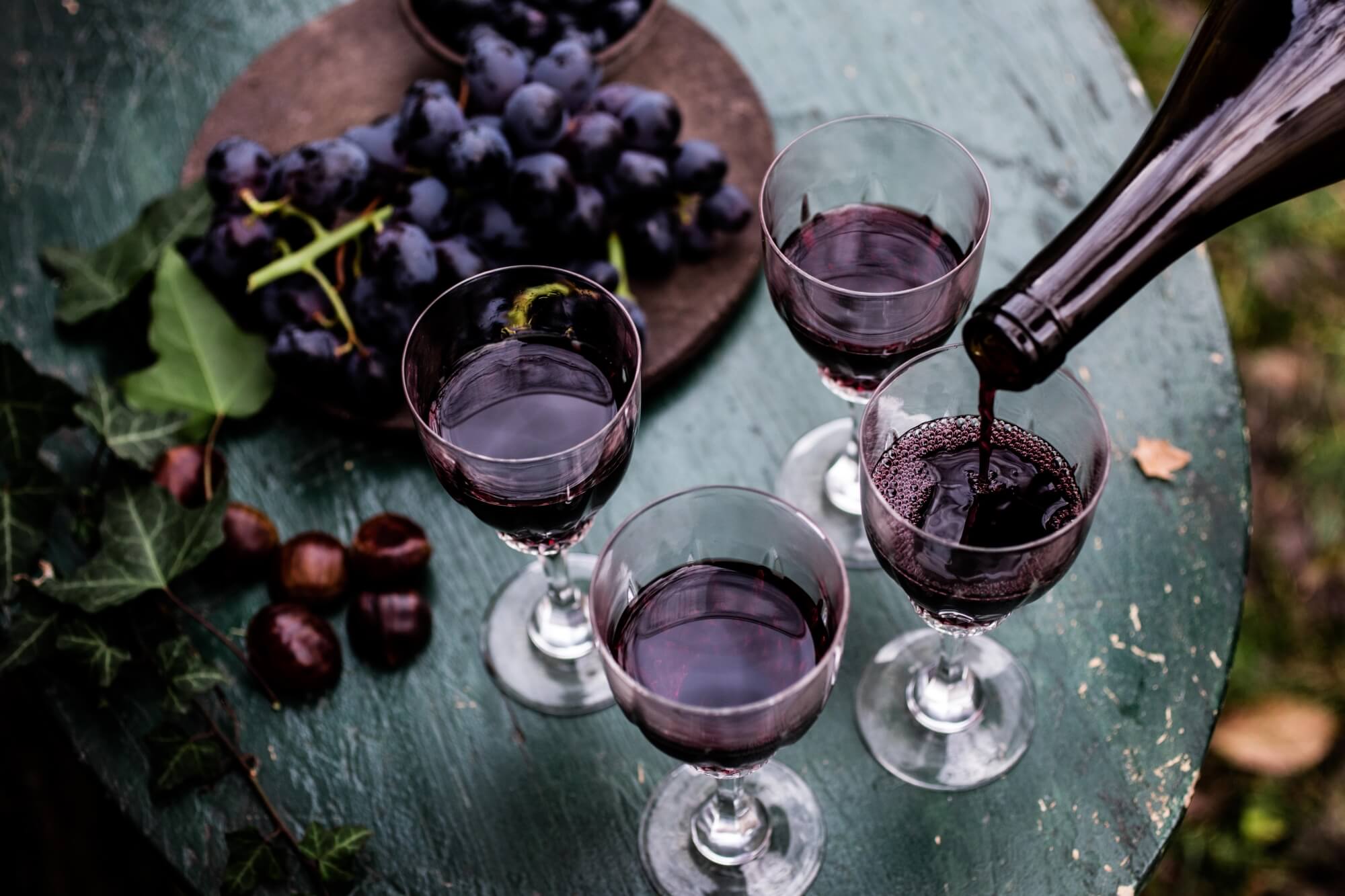 Inclusive Šibenik © Maja Danica Pečanić
Inclusive Šibenik © Maja Danica Pečanić
Furthermore, in the hills surrounding Šibenik, you'll discover some of Croatia's greatest small-scale wine producers. They might not be the most famous, but the winemakers of Šibenik-Knin County are consistently among the most highly decorated producers featured at elite international wine awards.
Landscape, nature and recreation
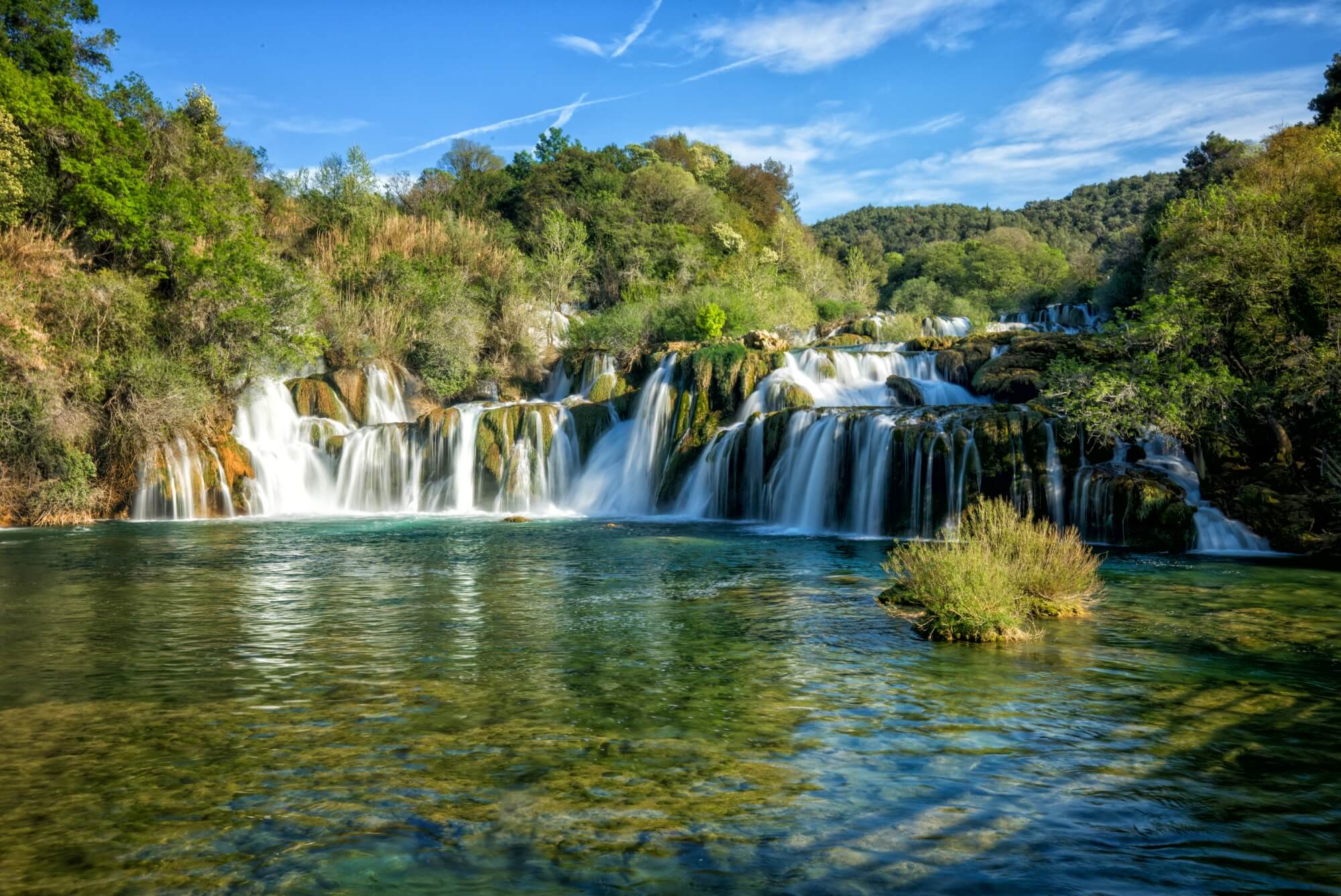 © Krka National Park
© Krka National Park
Few Mediterranean cities can boast natural assets like Šibenik's. And nowhere else looks exactly like this city.
Just 20 minutes drive from the town is Krka National Park. It is one of Croatia's most famous, most popular and most spectacular National Parks. Within 100 square kilometres of epic river valley, green wilderness and karst rock canyons, you'll discover seven spectacular waterfalls and a variety of birds and animals.
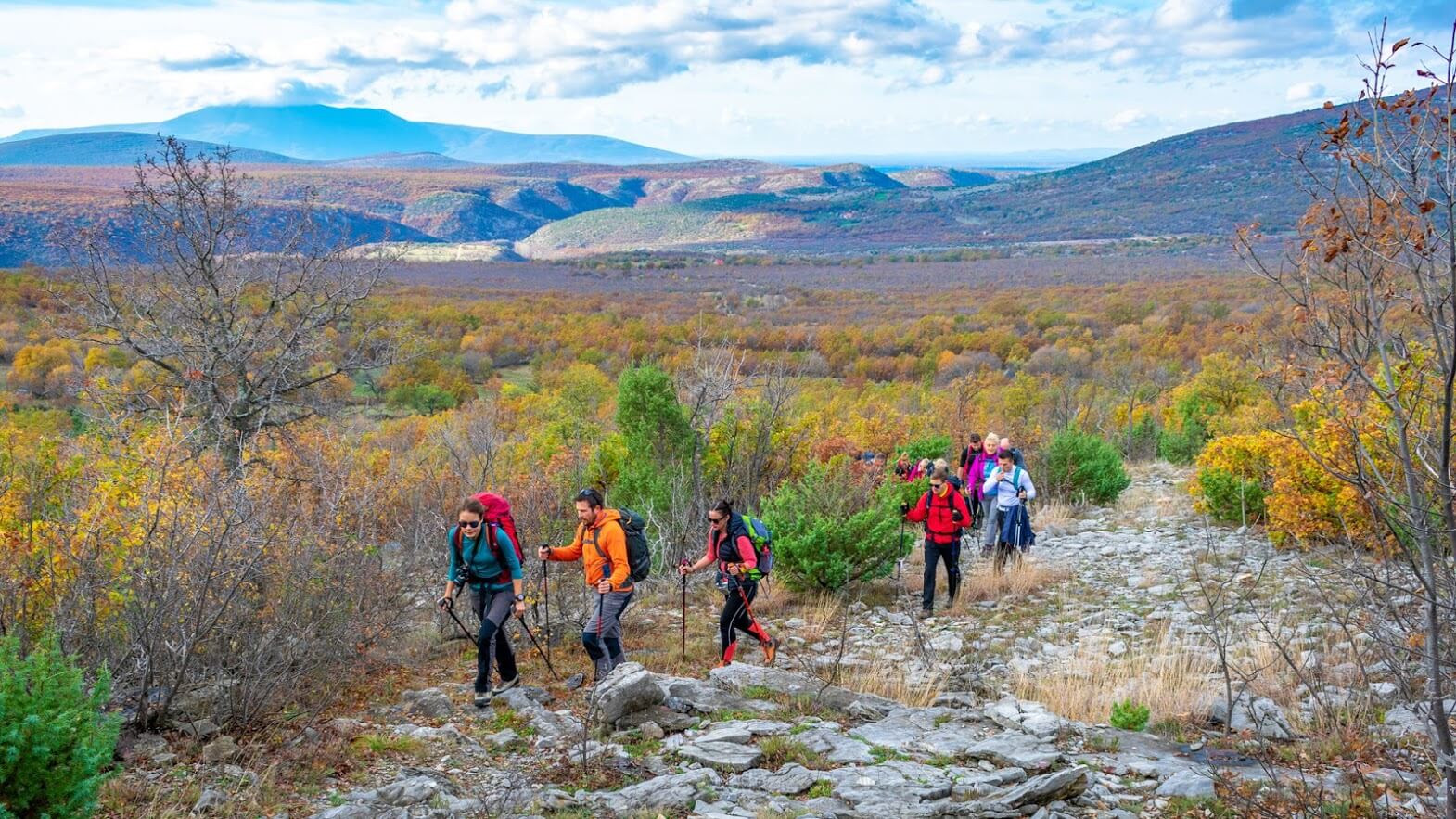 © Antonia Viljac / Šibenik Tourist Board
© Antonia Viljac / Šibenik Tourist Board
Closer to the city centre, St. Anthony's channel is a natural waterway that flows from Šibenik's sheltered harbour out to the open Adriatic. Running along the length of the channel's southern shore is one of Šibenik's best-loved areas of recreation. There you'll find St. Anthony's walking path and beaches with endless promenades.
Warm welcome
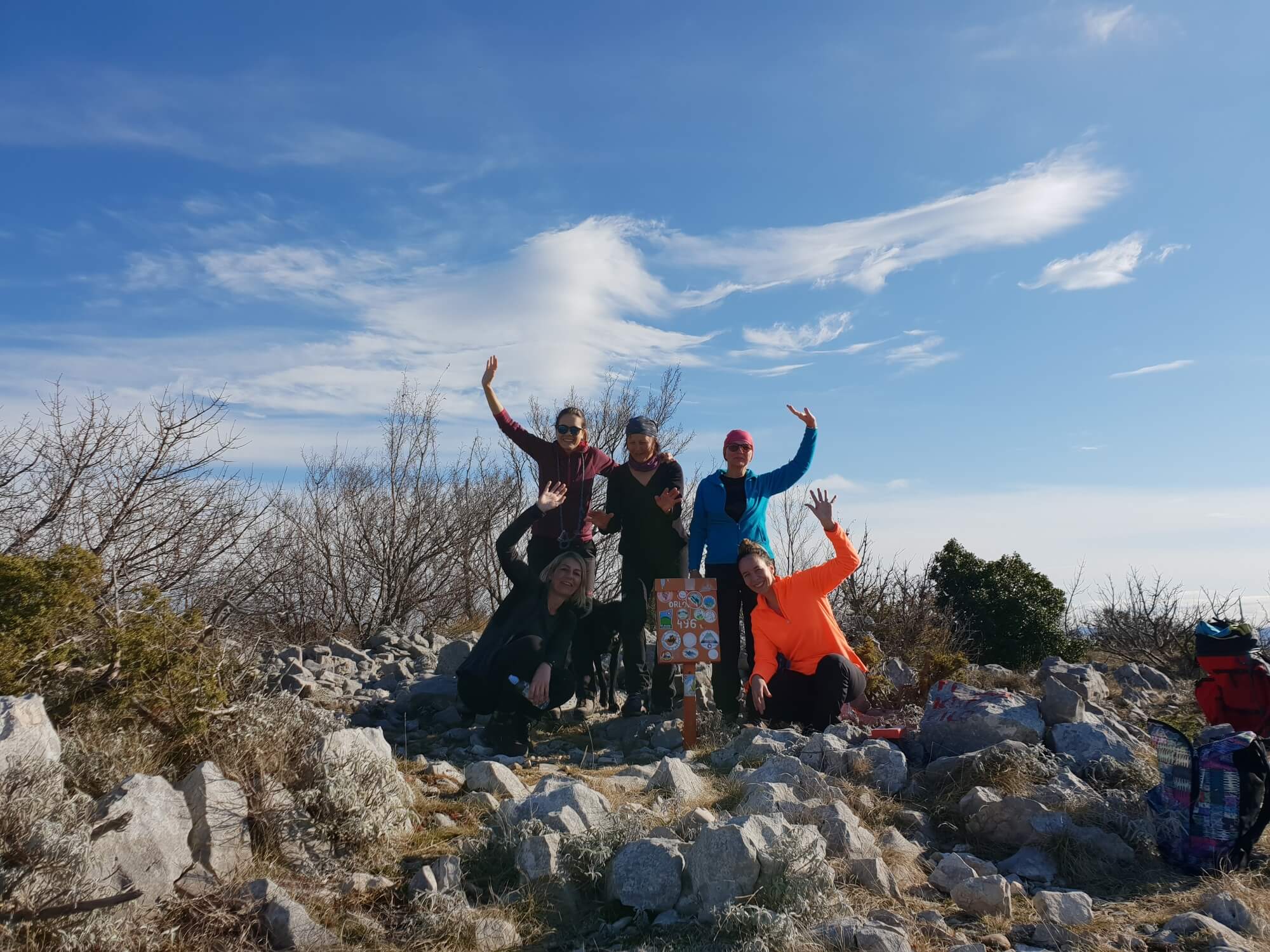 © Antonia Viljac / Šibenik Tourist Board
© Antonia Viljac / Šibenik Tourist Board
When talking about the distinct qualities of Šibenik, sooner or later you need to mention the welcome. Šibenik loves visitors. Šibenik residents appreciate nothing more highly than those who come to look and spend time here. That's why the city and Šibenik Tourist Board make a special effort to ensure Šibenik is accessible and a city for all. Recent EU project Tourism4all has helped to significantly improve Šibenik's ability to receive all visitors, including guests with disabilities and seniors.
Inclusive Šibenik History and Heritage: Fortresses and Old Town
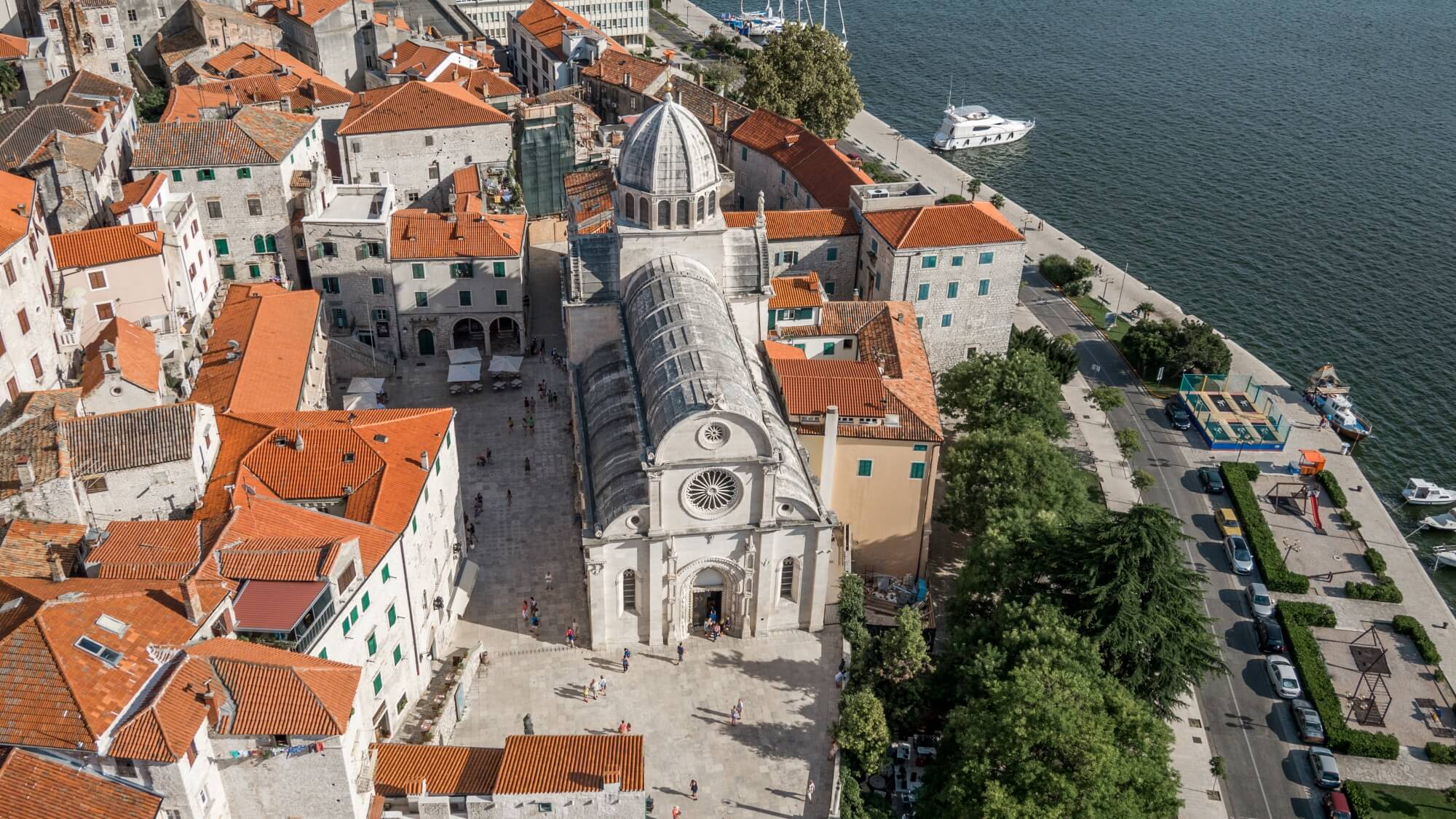 Inclusive Šibenik © Šibenik Tourist Board
Inclusive Šibenik © Šibenik Tourist Board
Šibenik Old Town wasn't designed with accessibility in mind. In fact, it wasn't strategically planned at all. Instead, the Old Town simply evolved over several centuries, rising up slopes when its expansion made that necessary. In total, there are over 2000 stairs and steps running through the Old Town. Charming to some, they are an obstacle for others. To help overcome those obstacles, Šibenik Tourist Board - with support from local associations of persons with disabilities - have mapped the accessibility of all the public buildings and tourist attractions. You can check out the map here.
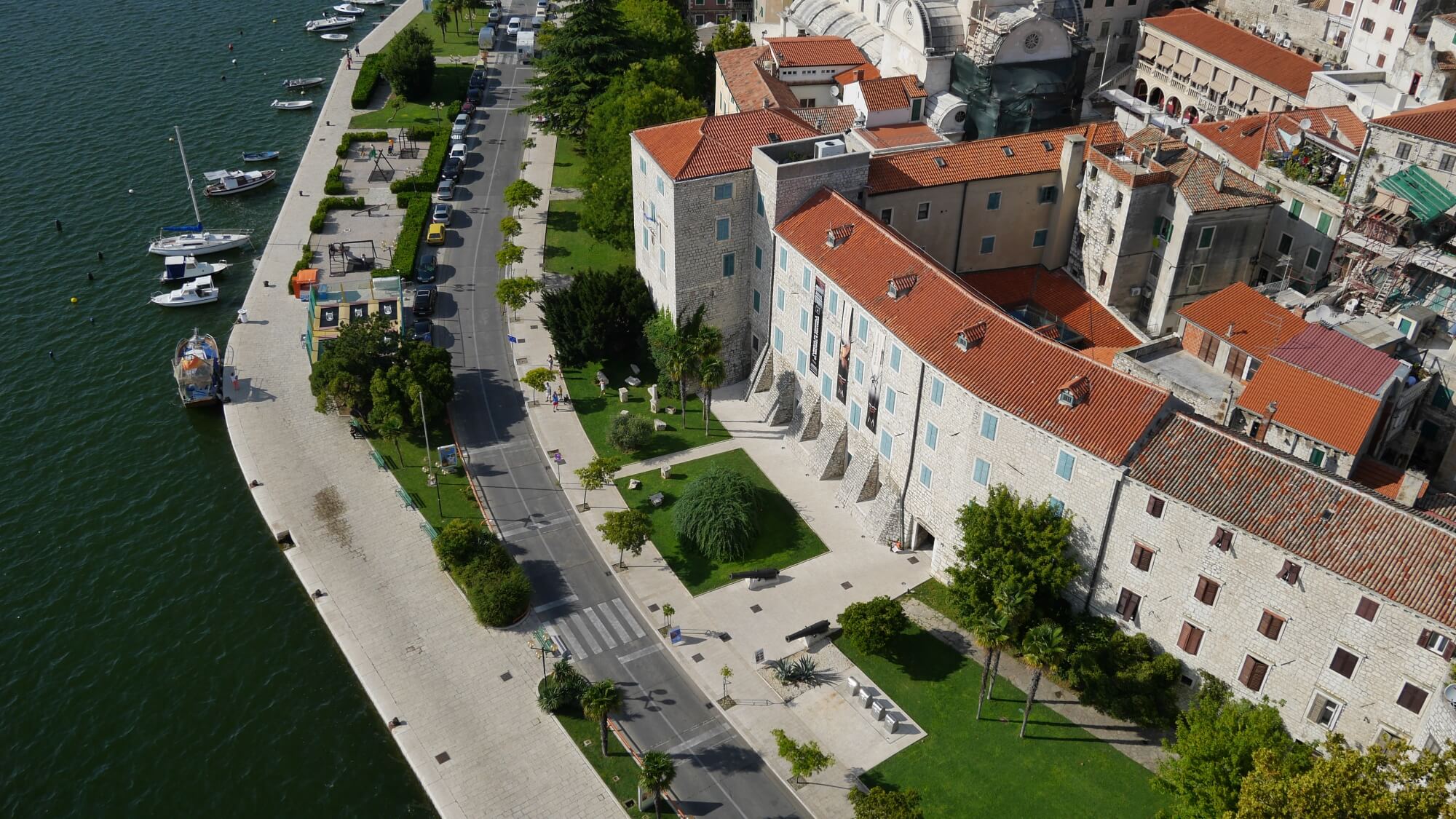
Experienced guides from the professional Association of Šibenik Tourist Guides Mihovil have recognised that, on average, at least one member of every guided tour group they lead has special needs. In response, they have invested time and effort to create tours adapted to the needs of persons with different disabilities. One additional tool that's been created to help visitors get around the city centre is a mobile phone app – Šibenik Audio Guide. It was designed with blind and partially sighted visitors in mind, although is useful for everyone. Šibenik Audio Guide is available in English, Italian, German and Croatian and is downloadable from Playstore and iStore.
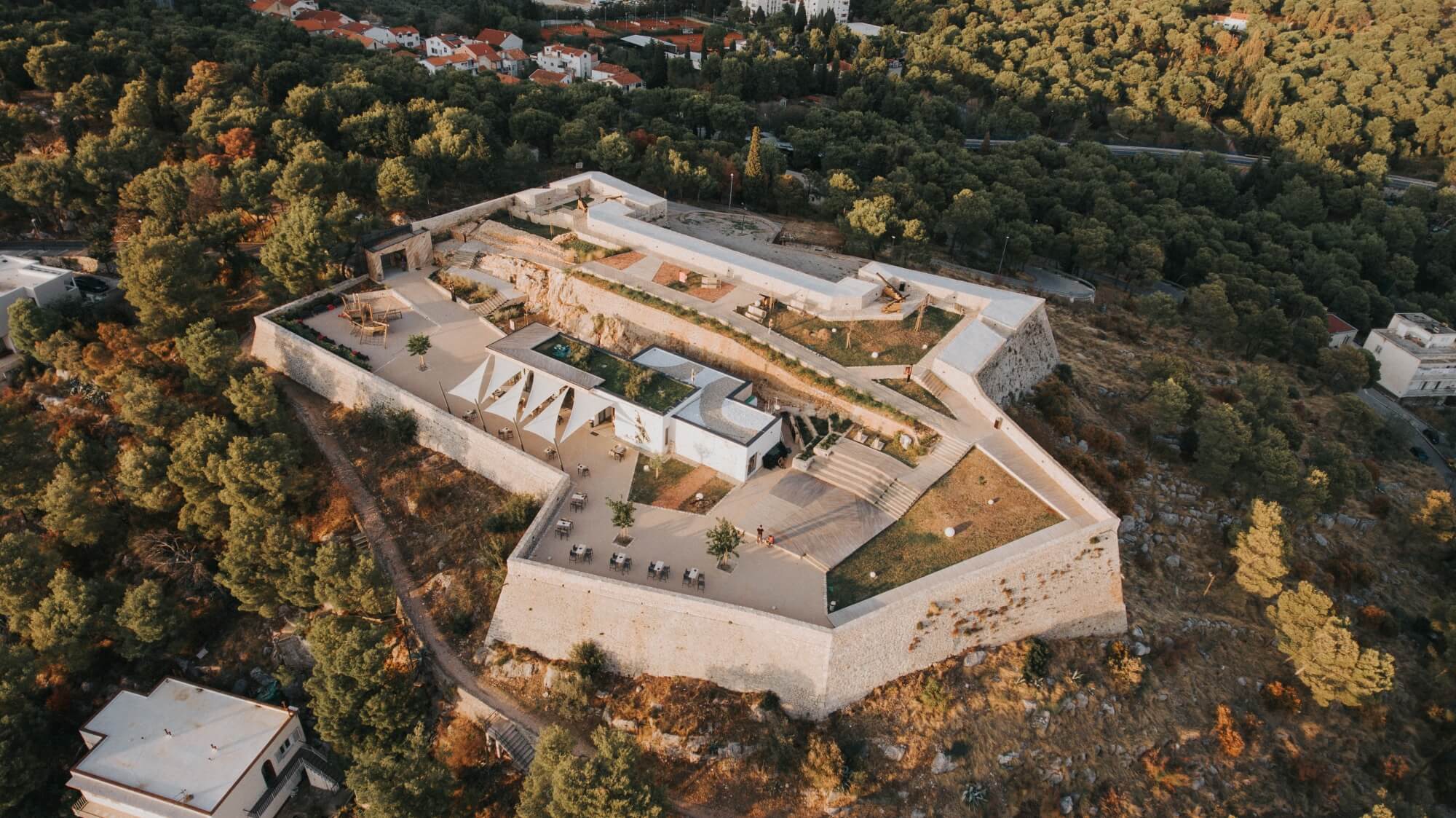 Inclusive Šibenik: Barone Fortress © Šibenik Tourist Board
Inclusive Šibenik: Barone Fortress © Šibenik Tourist Board
Further to these efforts, two of Šibenik's fortresses - St. Michael’s Fortress and Barone Fortress – have been reconstructed to be fully accessible to persons with disabilities. Inside the fortresses, you can learn how they helped defend Šibenik and more about the history of the city itself. One of the most breathtaking events spaces in Croatia, there's a spectacular backdrop of city, nature, sea and islands to performances at St. Michael’s Fortress. All of its dance, theatre, music and film events are fully accessible.
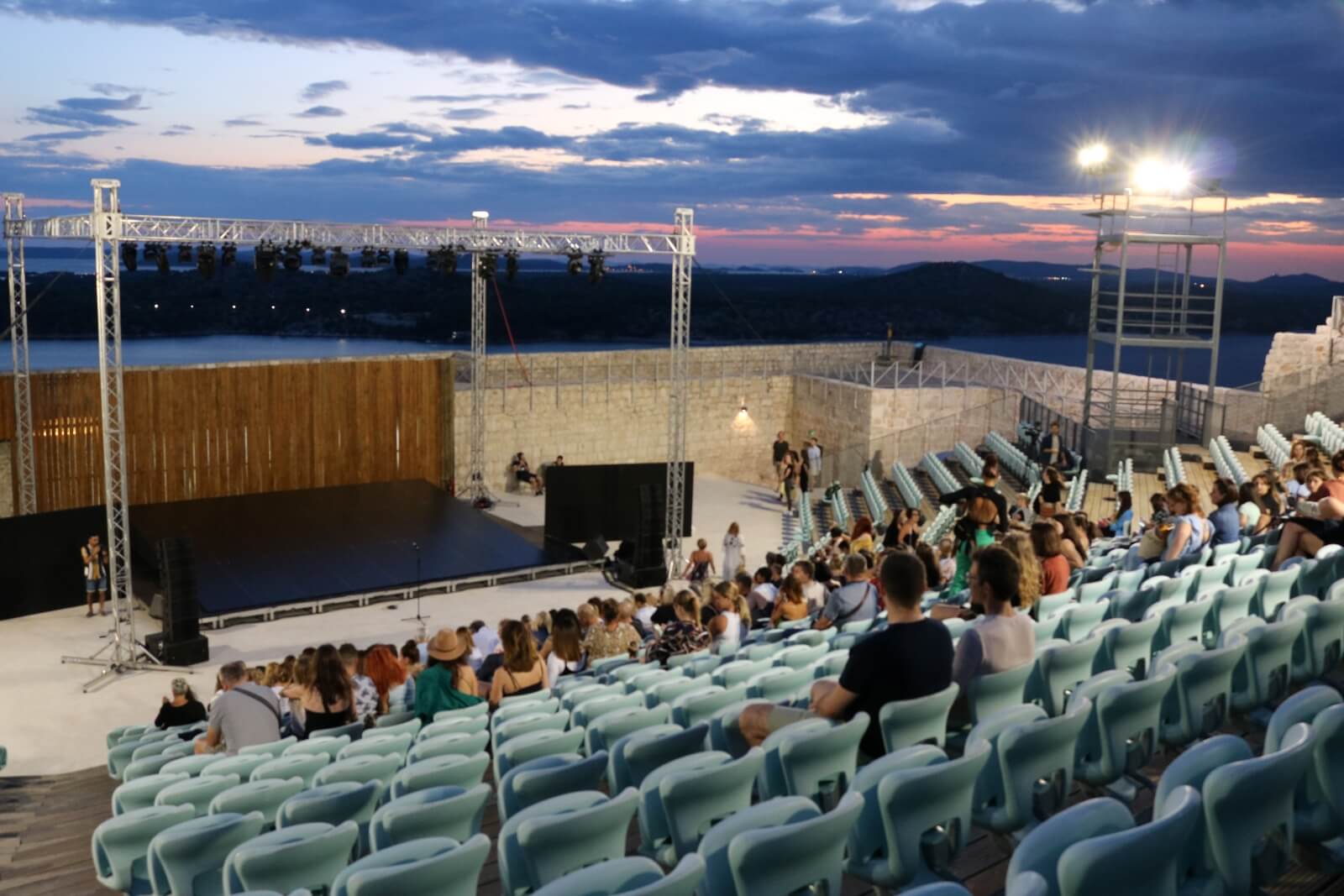
The Tourism4all project has supported the introduction of transport services - a minivan that is equipped for the transfer of wheelchair users visiting the city. It is operated by local NGO Aurora.
Discover the Šibenik food and drink that's right for you
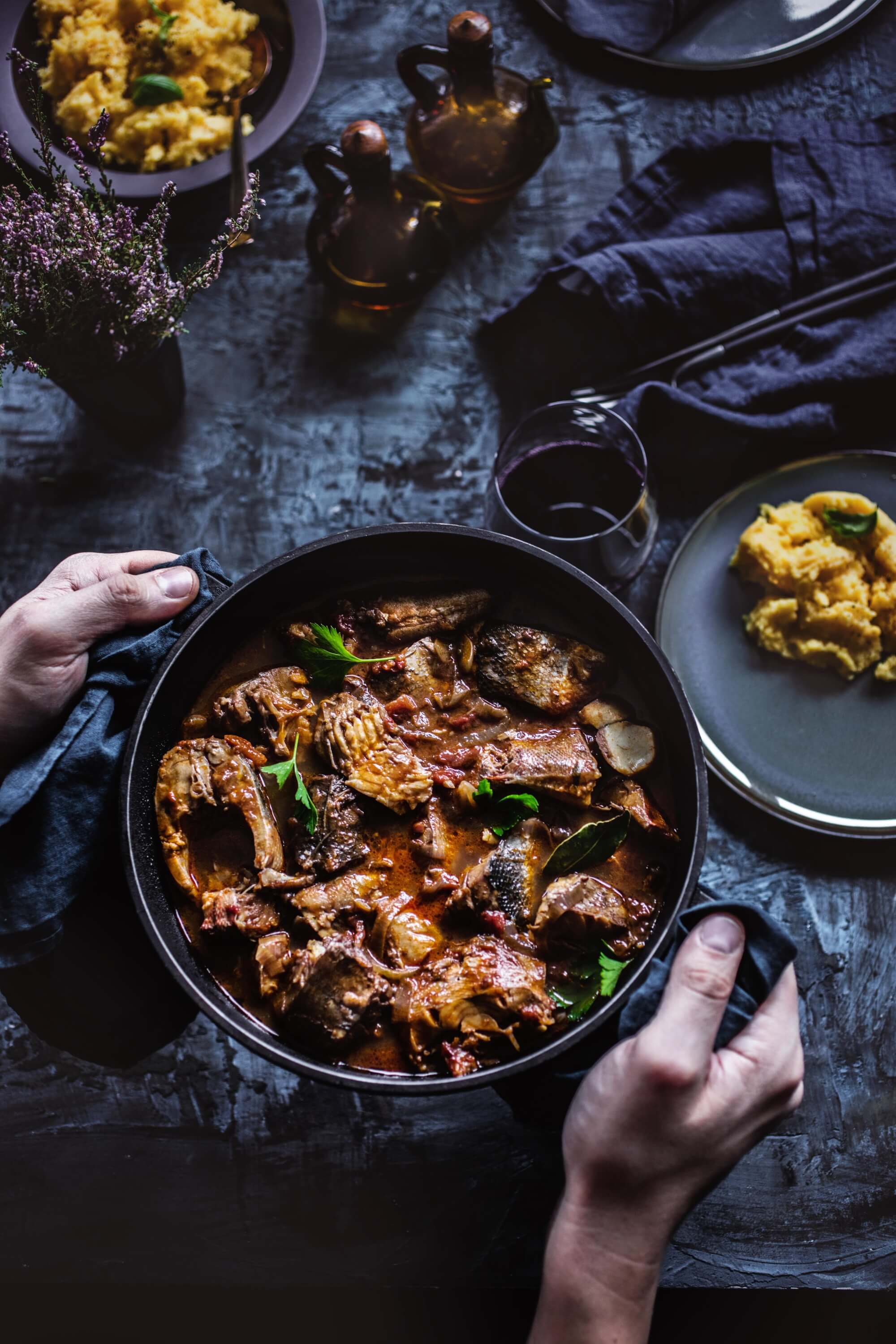 Inclusive Šibenik: Brudet © Maja Danica Pečanić
Inclusive Šibenik: Brudet © Maja Danica Pečanić
Within recent memory, many places in Croatia struggled to cater for the growing number of vegetarian and vegan guests arriving at their destinations. But, great advances have been made over the last decade. Nowhere more so than the city of Šibenik, where you can access a food map specifically designed for those with food intolerances or distinct dietary needs.
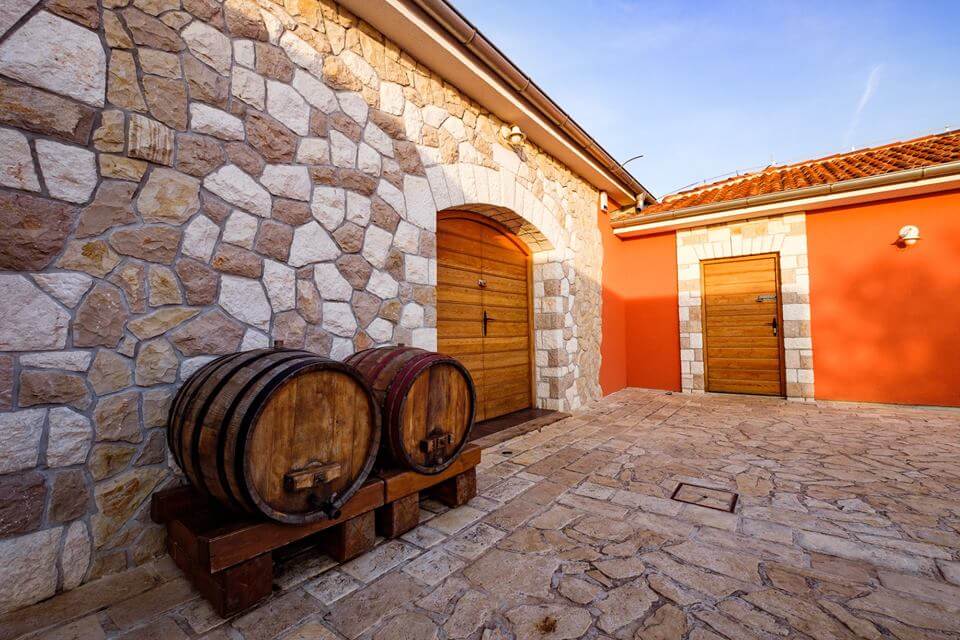 © Baraka winery
© Baraka winery
Want to discover more about local food and the celebrated wine of Šibenik-Knin County? Baraka winery, just outside the city, is surrounded by vineyards and olive trees. Their new cookery classes have been designed to be accessible to all and are perfect for small groups. You'll learn to cook local dishes using ingredients popular to the region. Then, you'll enjoy lunch or dinner in these beautiful natural surroundings.
Inclusive Šibenik Nature, Wildlife and Recreation
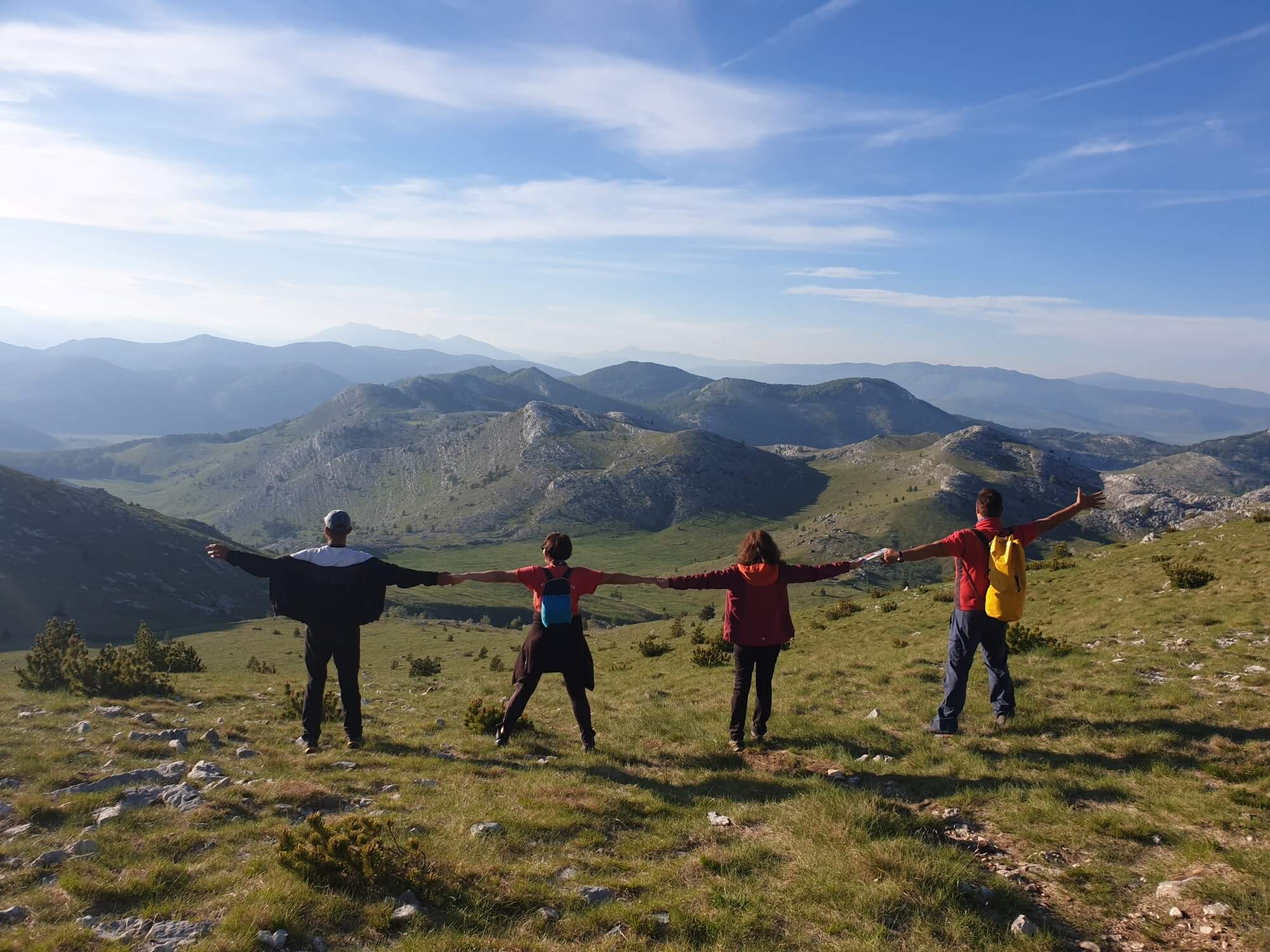 Inclusive Šibenik © Antonia Viljac / Šibenik Tourist Board
Inclusive Šibenik © Antonia Viljac / Šibenik Tourist Board
The nature surrounding Šibenik is spectacular. Whatever your abilities or level of fitness, this nature can be enjoyed by all. Sections of Krka National Park with broad accessibility are specially designated by park authorities.
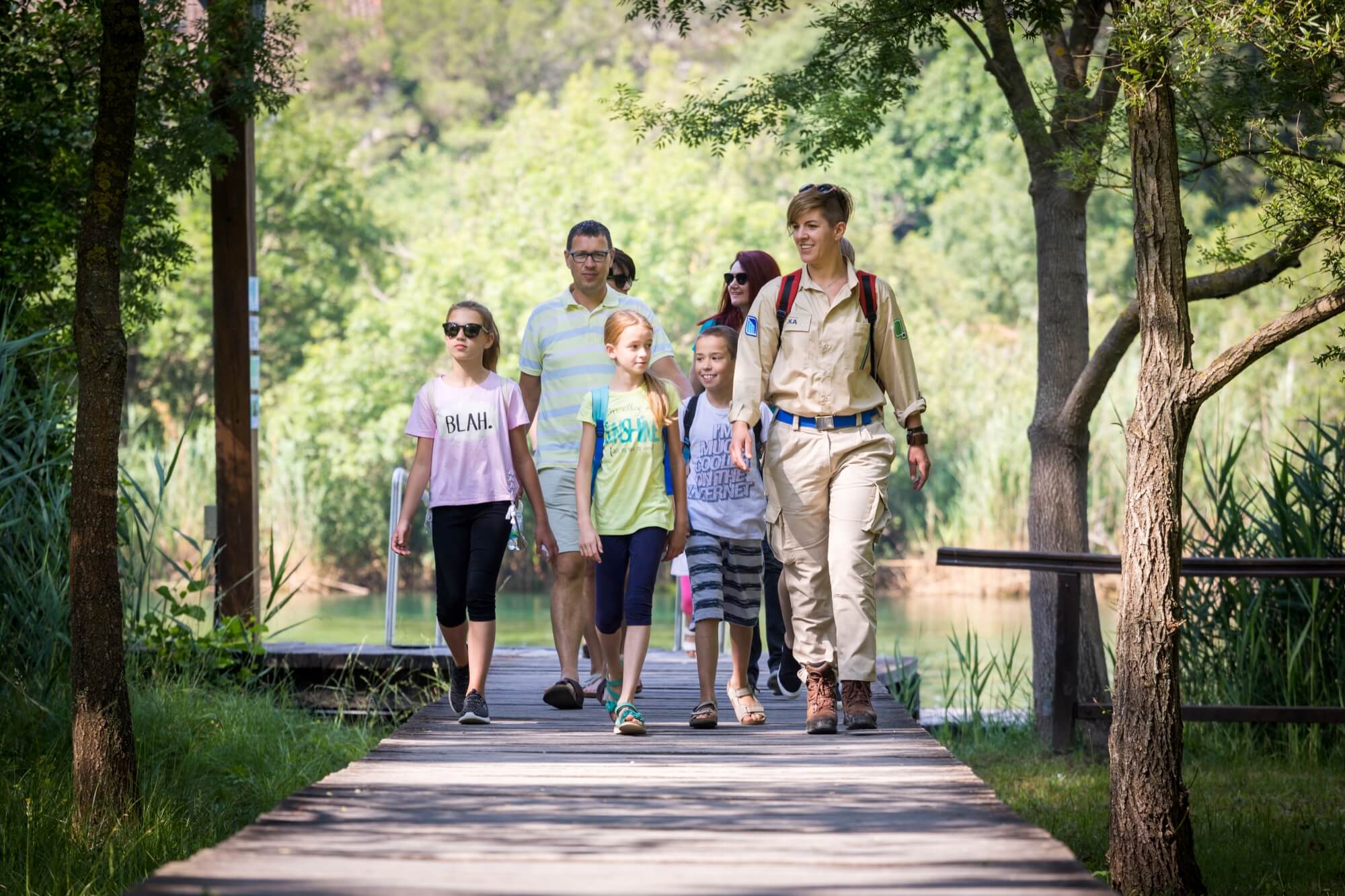 Inclusive Šibenik: Krka National Park
Inclusive Šibenik: Krka National Park
There are numerous walks and hikes across the cityscape that are designed for people of all ages and abilities. Family groups with several different generations can enjoy untaxing strolls around St. Anthony's channel. Above the city, Šubićevac Forest Park has a fully equipped playground area, designed for inclusiveness and accessibility. You'll get incredible views from both these places.
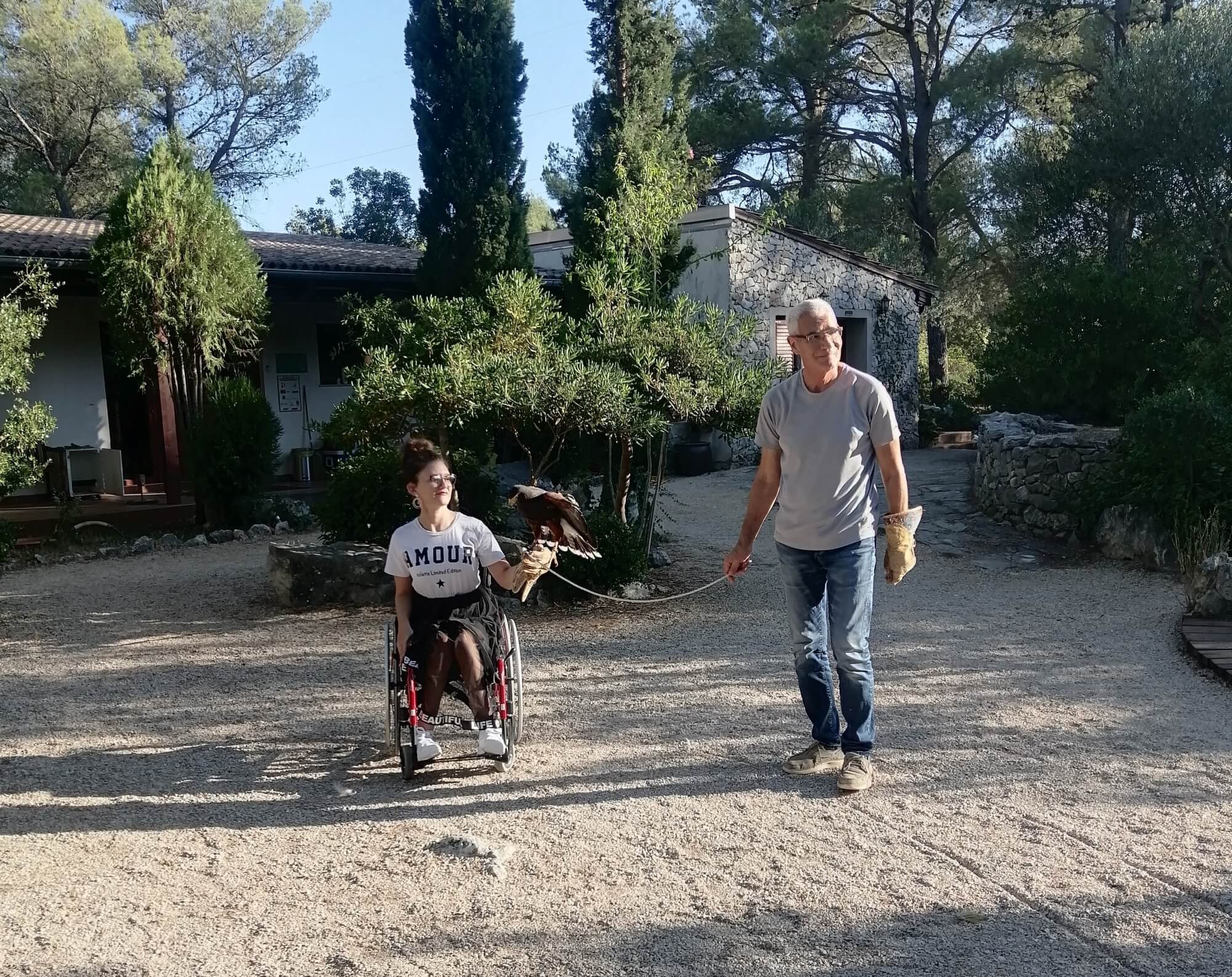 Inclusive Šibenik: Dubrava Falconry Center © Šibenik Tourist Board
Inclusive Šibenik: Dubrava Falconry Center © Šibenik Tourist Board
If you want to get up close to some of the animals that live in this area, then there are several options. Located in a dense pine forest less than 10 kilometres from Šibenik centre, at the Dubrava Falconry Center, you'll meet several different birds of prey.
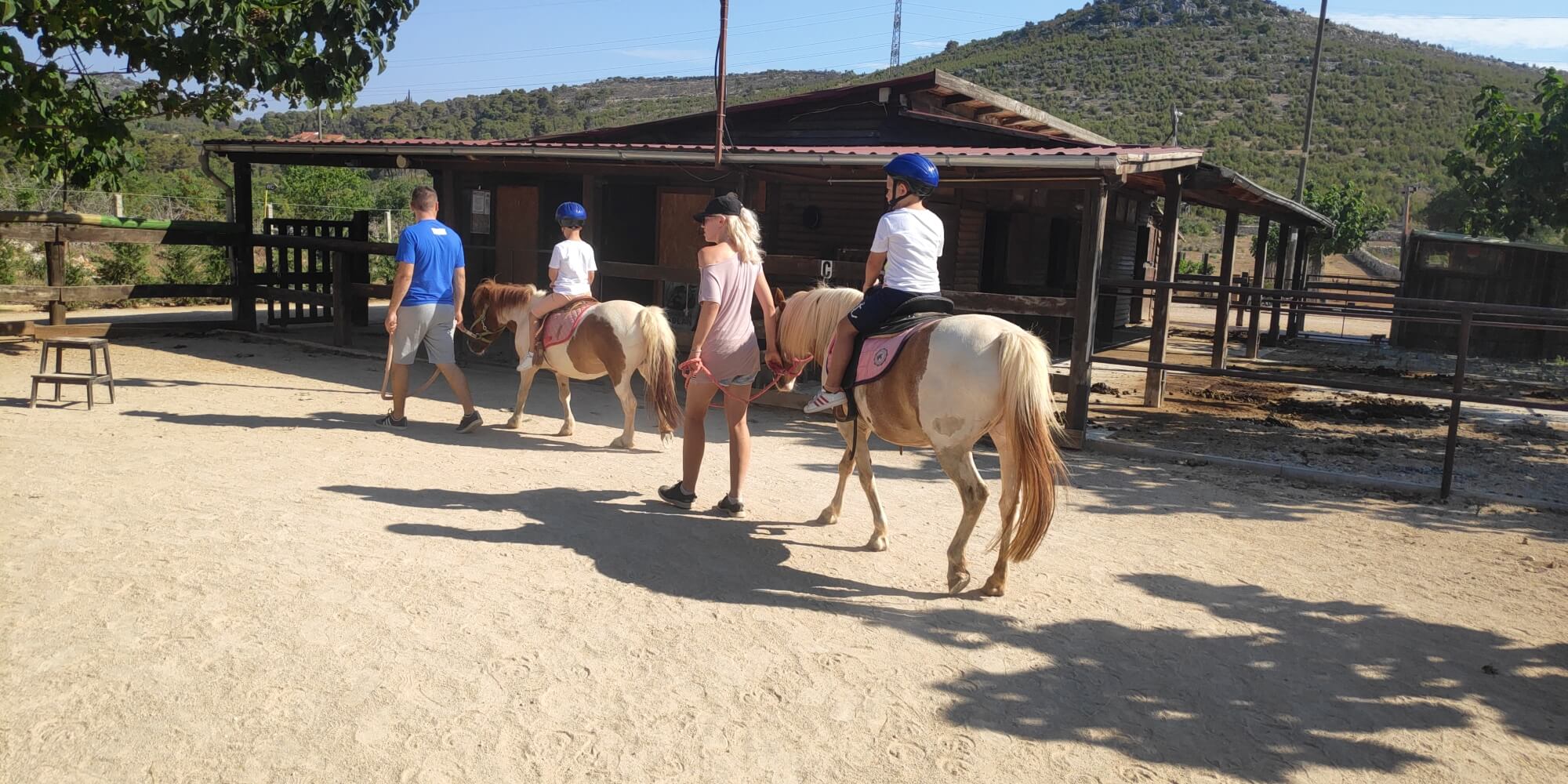 Inclusive Šibenik: KK Kolan horseriding club at Farma Happy Horse © S. Živković
Inclusive Šibenik: KK Kolan horseriding club at Farma Happy Horse © S. Živković
At Farma Happy Horse you'll meet horses and llamas. In fact, there's a range of domesticated animals waiting to greet you on this small family farm. They're all very friendly. Also, horse riding club KK Kolan operates on the farm. Their experienced team offer specially designed therapeutic horse riding sessions for children and teenagers with disabilities.
Accessible accommodation in Šibenik
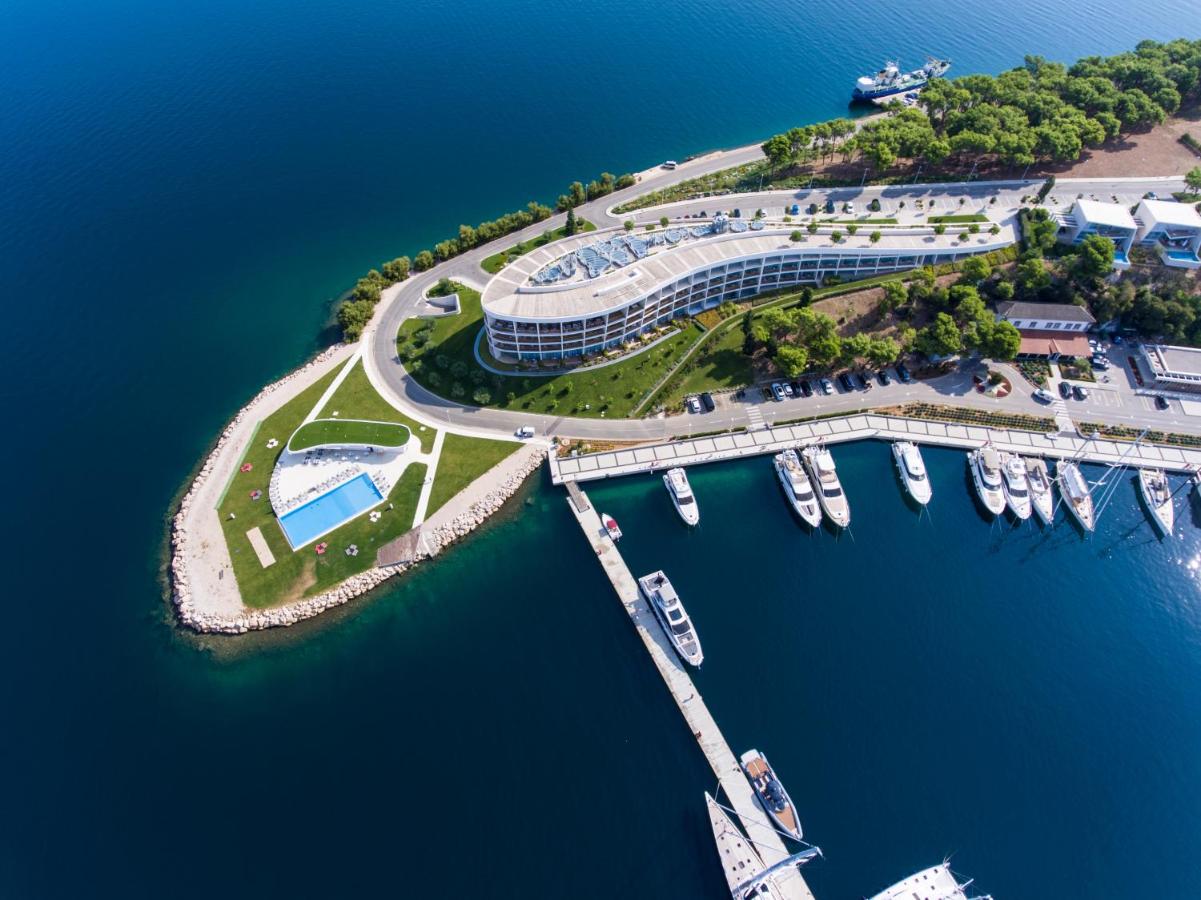 © D-Resort Šibenik
© D-Resort Šibenik
D-Resort is a modern hotel resort at the side of Šibenik marina. It sits at the very end of a small, thin peninsula that stretches into Šibenik bay. Its light and spacious rooms have balconies that look out onto the bay, the city and the nature opposite. The hotel has 4 bars and lounges and, just next door, a spa area. The hotel has appointed rooms designed to be accessible and specifically with disabled guests in mind.
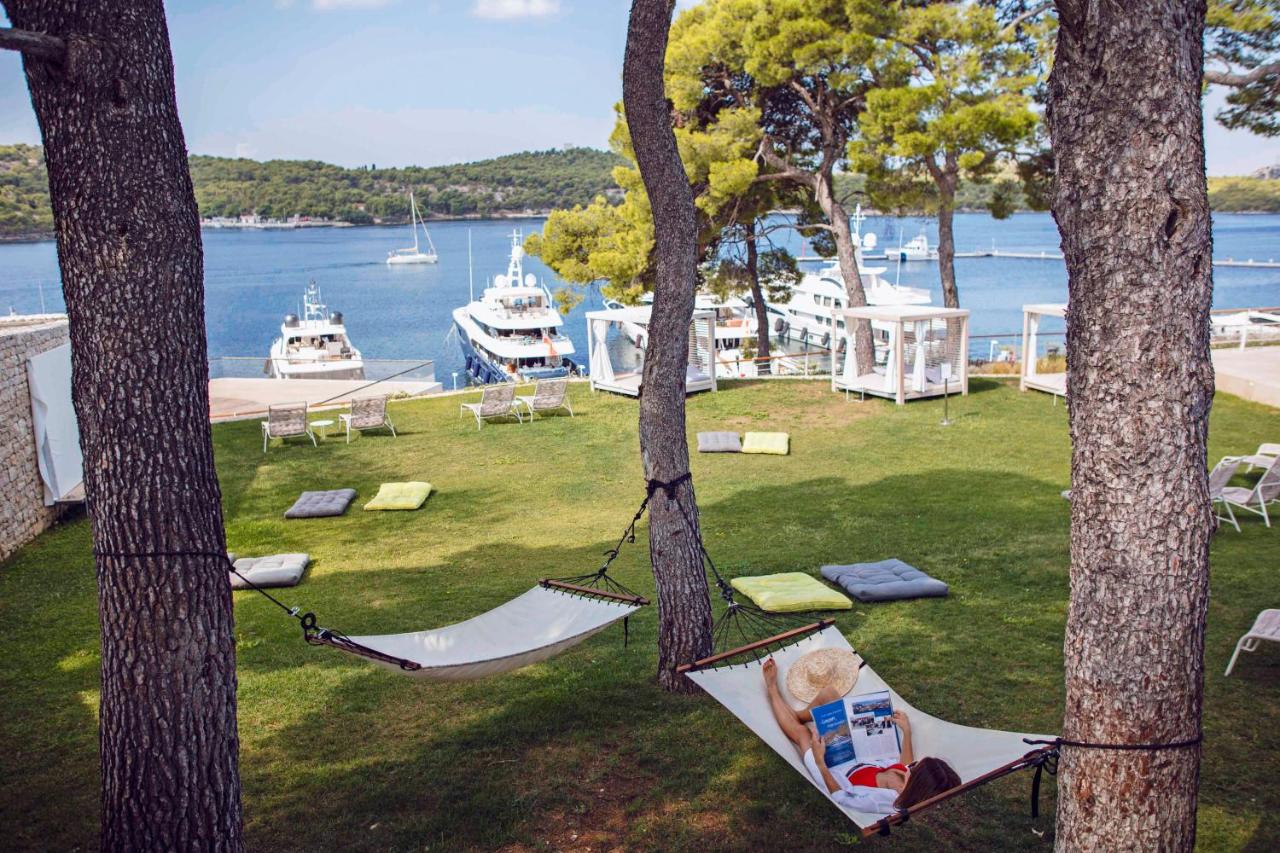 © D-Resort Šibenik
© D-Resort Šibenik
Visitors to Šibenik can take advantage of Šibenik Card and obtain various discounts, including 20% discount on accessible rooms at D-Resort. For more information about Šibenik Card, look here.
Croatia's Food 2nd Most Expensive in EU by Wage: Health Implications?
January 13, 2021 – Only in Romania are they so poor that they spend more of their income on food than here. In a country famous for its premium produce, what is the price on the health when Croatia's food is so incredibly expensive?
Croatia's food is the second most expensive in Europe when judged next to average household income. Only in Romania do people spend a larger percentage of their monthly wage on food and non-alcoholic drinks. In the EU, the average household spends on food takes up 7% of their earnings. In Croatia, it is almost double that amount – 13%. That the average monthly wage in Croatia is a third lower than the EU average accounts for some of this disparity. Though the other reason is simply that Croatia's food is really, really expensive.
“I couldn't believe it when I saw the prices of food after I got to England,” Split-based nutritionist Iva Tokić tells TCN. Having studied for her Bachelor's degree in nutrition at the University in Split, she transferred to Oxford Brookes University in England where she earned her Master's degree in the subject. “I expected food to be much more expensive, because life, in general, is so much more expensive in the UK than it is here. I was pleasantly surprised to see that the prices of the UK's food are almost exactly the same as Croatia's food, except that in England some things like avocado, salmon (losos) and smoked salmon is so much cheaper than it is in Croatia. Insane!”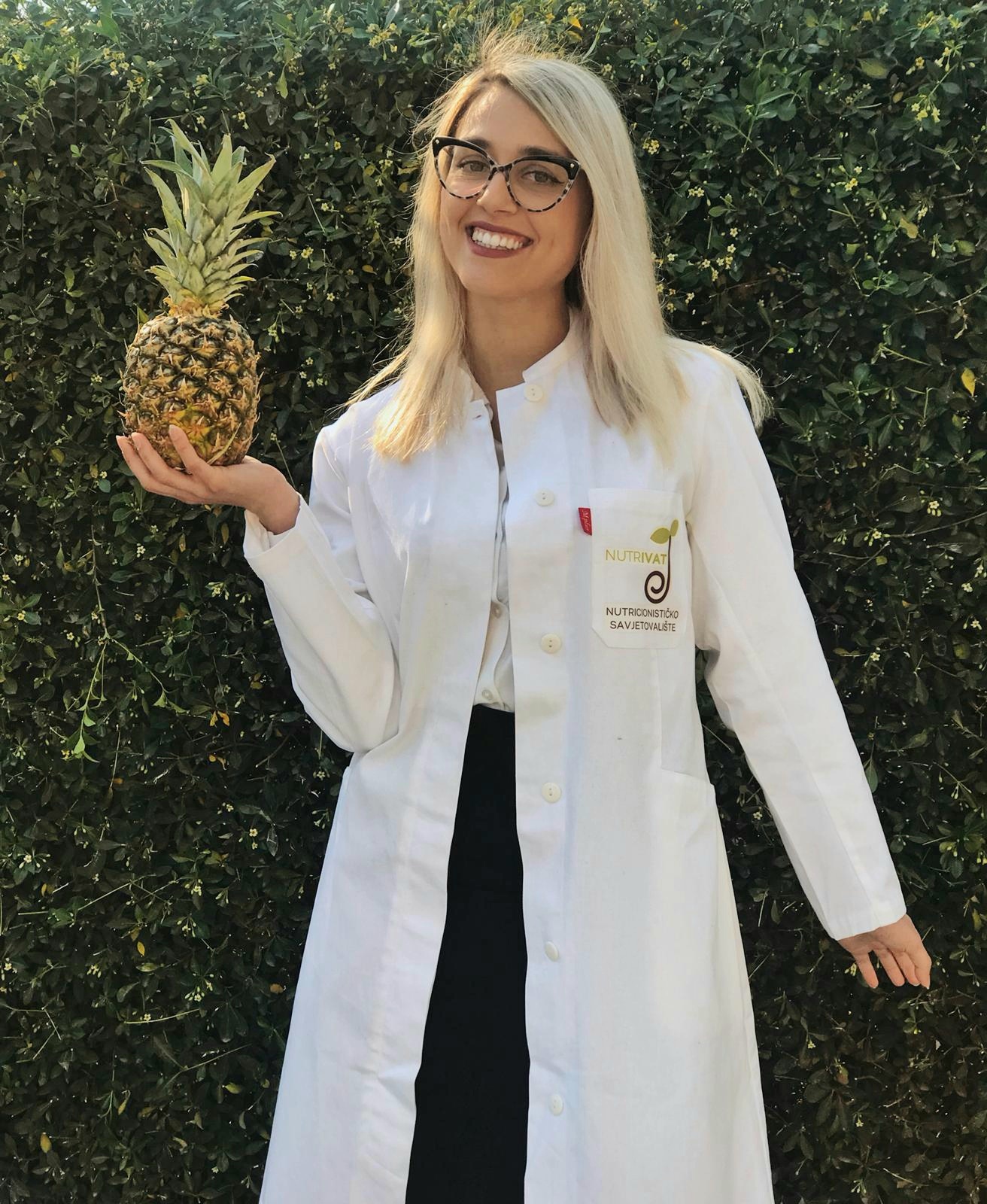 Iva Tokić, who has her own independent practice as a nutritionist and works as a nutritional educator and consultant for other polyclinics and sports professionals back in her hometown of Split. She has a Master's degree in nutrition
Iva Tokić, who has her own independent practice as a nutritionist and works as a nutritional educator and consultant for other polyclinics and sports professionals back in her hometown of Split. She has a Master's degree in nutrition
Food shopping in the UK is a very different experience to that in Croatia. You would struggle to understand fully just how different it is unless you'd actually done both. There simply isn't enough farmland in the UK to feed all of its inhabitants. Most food is imported. Where in Croatia, you can still experience the authentic experience of eating a varied diet based on the seasons, in the UK that simply doesn't exist. Everything is in season somewhere in the world. And that's where they'll take it from. Everything is available. All of the time.
What the UK loses in this set-up - seasonal eating and the varied diet this creates – it makes up for with the offer available and price. Food and flavours from all over the world can be bought in any of the competing supermarkets. International cuisine is incredibly popular. And, just as the supermarkets compete to lower prices, so do producers – it isn't only salmon and avocado that is cheaper in the UK.
The lamb produced in the lush, green hills of Wales or on the moors of northern England and southern Scotland is comparable in extremely high quality to the very best you could buy from Pag or anywhere else in Croatia. Except in the UK, the animals' diets are unrestricted – the lambs grow much bigger. Though much of this premium product is exported (British lamb is a highly prized delicacy across much of western Europe, particularly France), a lot of it is still sold in the UK. Its price is kept down by huge amounts of imported New Zealand lamb which competes against the domestic lamb in price. In Croatia, lamb is an expensive treat – in the UK, it's an everyday meat. And it is much cheaper than it is in Croatia.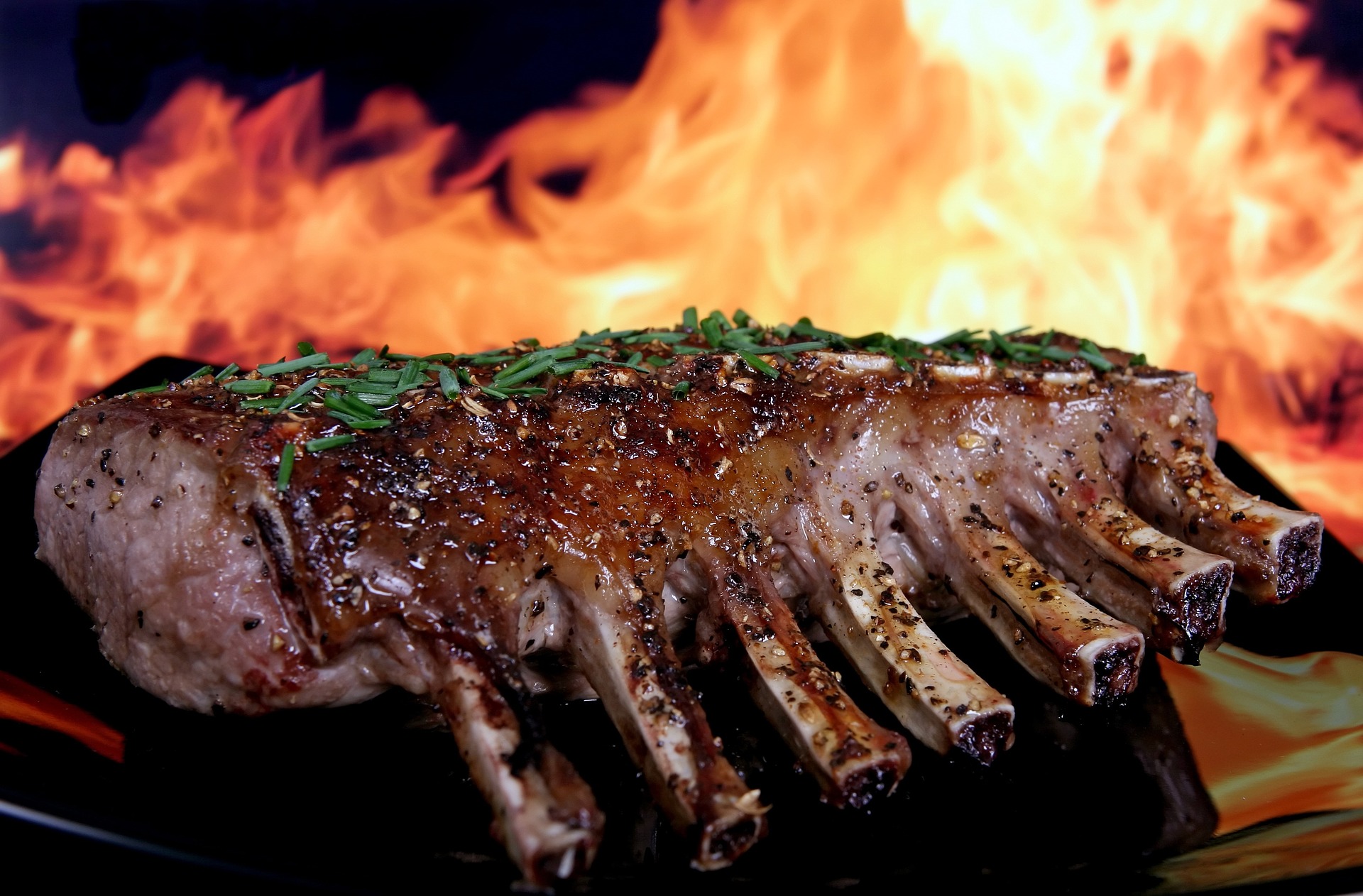 Although the lamb meat produced in the UK is of comparable quality to that produced in Croatia, the meats form a very different part of the diet in the two countries. In Croatia, lamb is an expensive treat. In the UK, lamb is much cheaper and viewed as an everyday meal
Although the lamb meat produced in the UK is of comparable quality to that produced in Croatia, the meats form a very different part of the diet in the two countries. In Croatia, lamb is an expensive treat. In the UK, lamb is much cheaper and viewed as an everyday meal
Within this one example we can sharply see the disparity between the premium food produced in Croatia and the general diet of the everyday citizen. Croatia is now known well for its cuisine and produce. TCN was pleased to report over recent weeks the success of food and agricultural exports from Croatia. However, the finest prsut, olive oil, seabass (brancin), bream (orada) and red wine for which Croatia is famous do not make up standard everyday Croatian meal. These luxuries are often exported. Pasteta (meat paste) on bread and cheap wine made palatable with cola are more likely to be the elements of Croatia's food found in any student kitchen in the country.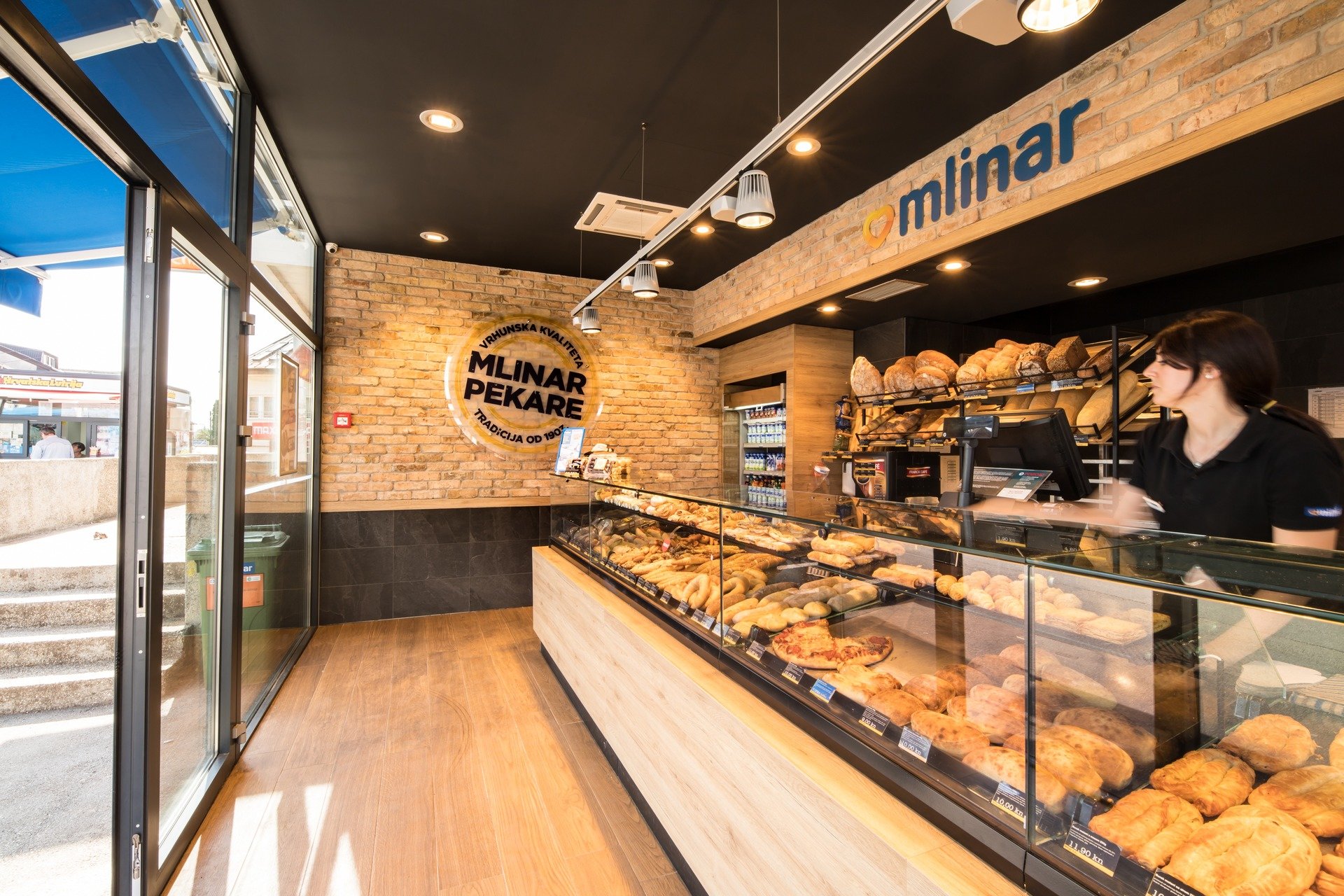 The pekara (bakery) is a fast, inexpensive and very popular choice for both breakfast and lunch in Croatia, but is it the healthiest thing to eat every day? © Mlinar
The pekara (bakery) is a fast, inexpensive and very popular choice for both breakfast and lunch in Croatia, but is it the healthiest thing to eat every day? © Mlinar
“We really don't eat enough fish. It's so disappointing because we live right next to the sea!” says Iva, who now works in her own independent practice, and as a nutritional educator and consultant back in her hometown of Split. “But, we don't eat enough of it because it's way too expensive for a lot of us to eat regularly. We also don't eat enough vegetables and fruit. We eat meat. We eat a lot of meat. We eat a lot of pekara (bakery) too. It's often the cheapest and the most convenient. If you want to save money and grab something fast, get breakfast in pekara. Students and older people in particular, they all eat in pekara. That's not good because that food is high in trans fatty acids and saturated fats. Saturated fats are a problem because it's a big cause of cardiovascular disease. Too much meat and pekara, not enough fish, fruit and vegetables – those are definitely the biggest problems with the Croatian diet.”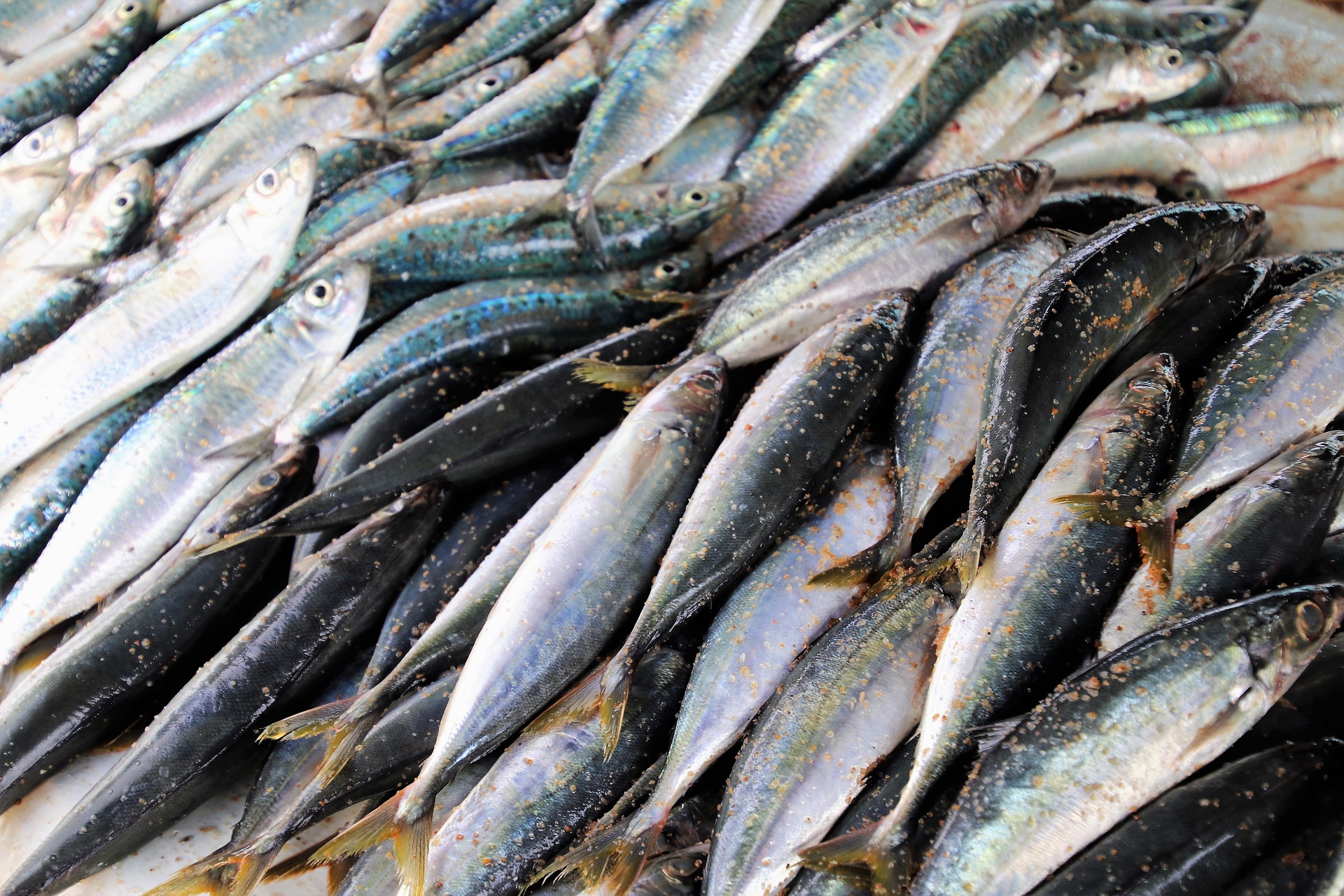 "Per capita consumption of fish and seafood in Croatia is estimated at 8 kg. Total consumption of fish and fish products per capita is significantly lower than in other Mediterranean countries. Fish is consumed mostly at home, traditionally once a week (on Friday) and during some holidays. The consumption of fish is higher in coastal areas than inland. Most fish is sold at traditional fish markets where the availability and freshness of fish products is considered very good. Only 3% of Croatia’s population eat fish every day, with the average person spending just 840 kuna (110 euros) a year on fish. In Croatia the most popular fish eaten are the cheaper varieties such as sardines and anchovies, followed by hake, mackerel and bonito. Croatia exports a big part of its quality fresh fish from the Adriatic, such as scampi and red mullet, whilst restaurants along the coast will often serve farmed fish or cheaper imported varieties." December 2016 Flanders investment and trade market survey of the Croatian Fishing sector, undertaken by the Trade Office of the Embassy of Belgium
"Per capita consumption of fish and seafood in Croatia is estimated at 8 kg. Total consumption of fish and fish products per capita is significantly lower than in other Mediterranean countries. Fish is consumed mostly at home, traditionally once a week (on Friday) and during some holidays. The consumption of fish is higher in coastal areas than inland. Most fish is sold at traditional fish markets where the availability and freshness of fish products is considered very good. Only 3% of Croatia’s population eat fish every day, with the average person spending just 840 kuna (110 euros) a year on fish. In Croatia the most popular fish eaten are the cheaper varieties such as sardines and anchovies, followed by hake, mackerel and bonito. Croatia exports a big part of its quality fresh fish from the Adriatic, such as scampi and red mullet, whilst restaurants along the coast will often serve farmed fish or cheaper imported varieties." December 2016 Flanders investment and trade market survey of the Croatian Fishing sector, undertaken by the Trade Office of the Embassy of Belgium
The problems of the diet created by Croatia's food habits have been observed for quite some time. And, according to the 2020 Global Nutrition Report, they are not getting better. Another report, one on childhood obesity published in just 2018 by the Croatian Institute of Public Health, stated that “every third child, i.e. 34.9% is overweight or obese. There are more overweight (21.5%) than obese (17.2%) boys. 67.3% of girls have a normal body mass index, 20.3% are overweight and 10.7% obese.” These figures are not improving, despite physical education being mandatory in Croatian schools.
“Everyone that comes to see me, everyone that seeks the help of a nutritionist, they all have high cholesterol levels, history of heart disease or they are obese,” says Iva. “The last one is becoming more of a problem. One third of children in Croatia are now obese. It's really quite pronounced. If you look at the statistics, obesity has actually been decreasing over recent years in developed countries. But, in Croatia, it is increasing.”
“Here, you can see the difference clearly between the UK and Croatia. In the UK, obesity was recognised as an issue and you can see the response throughout society. In the UK, you have taxes on sugary drinks. We don't have that here. The price of fruit and vegetables in the UK has actually been decreasing in recent years compared to average income. Here, it has only increased. At the supermarket checkout in the UK, it is now forbidden to have those tempting large racks advertising chocolates. From this year, that marketing is banned there, in the same way that advertising tobacco products is banned. Everything from the politics and the law to the school system is engaged in addressing the issue. We are not so much a developed country like the UK, so there is little promotion of physical activity here and no wider engagement of the issue. In the UK you even see signs suggesting “Why not takes the stairs instead of the elevator?” There's an effort to make everyone in society conscious of the issue.”
For a country famous for its international sports stars and the beach bodies that visitors see on the coast every summer, who would have thought that beneath the surface, Croatia's food and exercise habits were creating such a problem for the population? However, while a lack of exercise can be attributed to poor education and motivation, it is clear that economics has a significant impact on Croatia's food intake. In many cases, the poorer you are, the poorer you eat.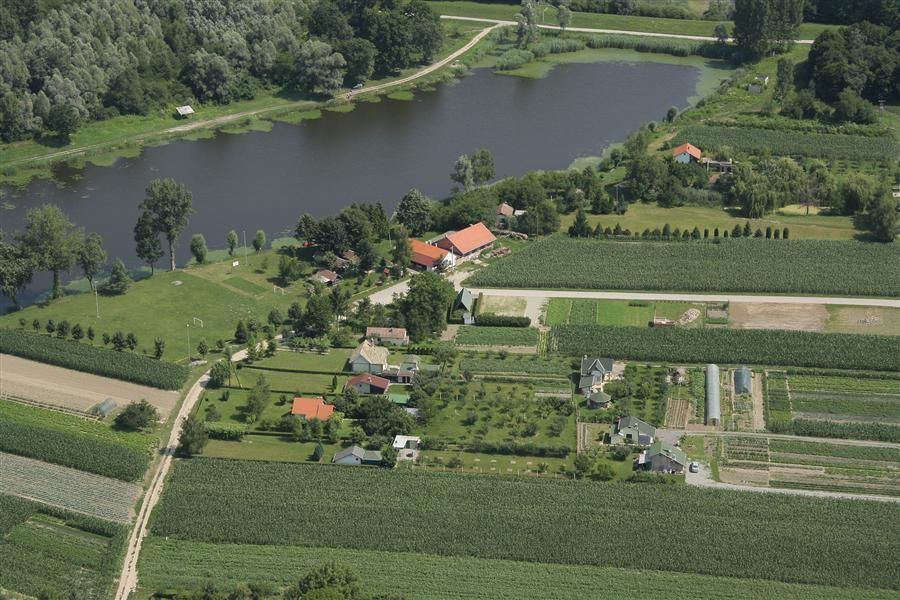 While eastern Croatia contains some of the country's economically weakest areas, many residents of Slavonia have land beside their houses where they grow vegetables, fruits and nuts. Despite this, they are still over-reliant on pork meat © Croatian National Tourist Board
While eastern Croatia contains some of the country's economically weakest areas, many residents of Slavonia have land beside their houses where they grow vegetables, fruits and nuts. Despite this, they are still over-reliant on pork meat © Croatian National Tourist Board
“In the more rural parts of our country, they eat much more seasonal fruits and vegetables,” says Iva. “They eat more vegetables in general – they grow it themselves and eat what they grow. Although, in many rural areas, there is still an over-reliance on meat. Especially the cheapest meat – pork.”
A 2008 study called Regional Differences in Dietary Habits of Adult Croatian Population conducted by researchers at the Andrija Stampar School of Public Health, School of Medicine, University of Zagreb concluded that the people in the poorest areas of Croatia had the poorest diets. Those regions were central Croatia and eastern Croatia (Slavonia).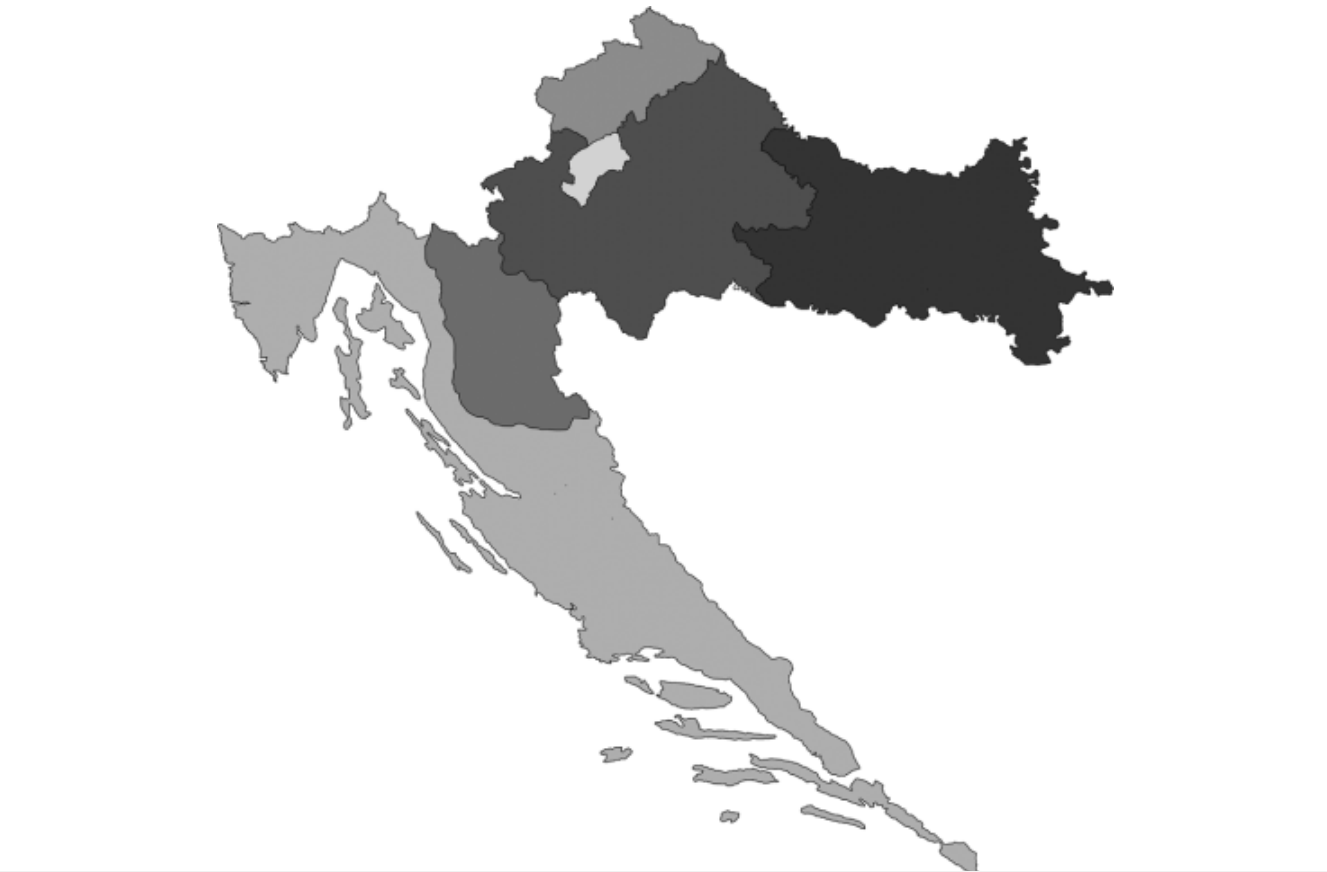 Croatia's food. A map showing the unhealthiest Croatian diets by region, produced for a study undertaken by researchers from the Andrija Stampar School of Public Health, School of Medicine, University of Zagreb. People who live in the poorest regions - central and eastern Croatia - have the least healthy diets. The diet of those who live in Zagreb, which has the country's highest wages, is very good
Croatia's food. A map showing the unhealthiest Croatian diets by region, produced for a study undertaken by researchers from the Andrija Stampar School of Public Health, School of Medicine, University of Zagreb. People who live in the poorest regions - central and eastern Croatia - have the least healthy diets. The diet of those who live in Zagreb, which has the country's highest wages, is very good
In these regions of higher unemployment and lower opportunities, people relied more heavily on a diet of red meat, preserved meats and smoked meats than anywhere else in the country. They also used more butter, pork lard and other kinds of animal fat in food preparation and more salt. While tradition and geographical location do play a part in forming these menus, it is incredibly naive to think that economics is not the key factor – there are river fish available all over Slavonia. This is not simply a question of a healthy Mediterranean diet in comparison to an unhealthy continental one – the City of Zagreb was shown in the study to consume an incredibly healthy diet of Croatia's food. The reason? It may be continental, but it has the highest wages in the country.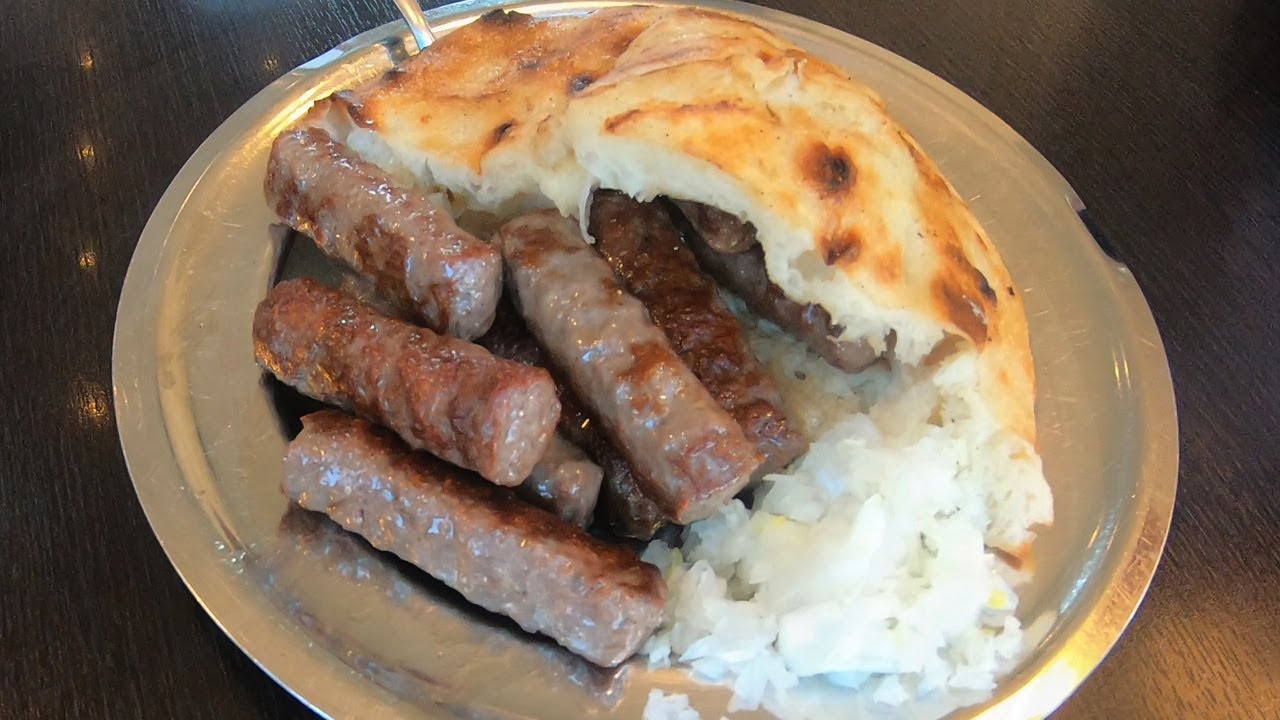 The Croatian diet is heavily reliant on unhealthy pork meat. Unless you go to a specialist or high-quality outlet, you will find cheap pork meat in almost every mixed/minced meat dish - in cevapi, in lasagne, in bakery snacks, in beefburgers and cheeseburgers (yes, really, they put pork their burgers - sometimes you can even find cheap chicken meat mixed into Croatian burgers. True story) and even in the mixed kebab meat. They preserve pork as the highly prized prsut/prosciutto, in sausages like kobasica and kulen, eat the pig's blood in a sausage called krvavica and fry the pig rind to make a crunchy but hardly healthy snack called cvarci. Croatia also has the best bacon in the world.
The Croatian diet is heavily reliant on unhealthy pork meat. Unless you go to a specialist or high-quality outlet, you will find cheap pork meat in almost every mixed/minced meat dish - in cevapi, in lasagne, in bakery snacks, in beefburgers and cheeseburgers (yes, really, they put pork their burgers - sometimes you can even find cheap chicken meat mixed into Croatian burgers. True story) and even in the mixed kebab meat. They preserve pork as the highly prized prsut/prosciutto, in sausages like kobasica and kulen, eat the pig's blood in a sausage called krvavica and fry the pig rind to make a crunchy but hardly healthy snack called cvarci. Croatia also has the best bacon in the world.
“Sometimes the most difficult obstacle to good health facing those here who really need to change their diet is the cost of Croatia's food,” agrees Iva. “It's easy to say “you must eat more fish, fruit and vegetables”, but it's not always easy to do. Many people simply can't afford it. So, what I try to do in those cases is to look for the cheapest foods available which are still the right options. For example, sardines here are really not so expensive. They are high in Vitamin D and Omega 3, which is very important for cardiovascular health. I also recommend eggs, which are high in Omega 3 fatty acids and Vitamin D. I recommend changing to milk and cheese which have a lower fat content. You can find good food which is not that expensive. You might have to search, but you can find it. I recommend people to go and see what is in the discount section. There are lots of us looking to address these problems. On the Instagram page of different.hr each week they advertise what foods are on discount in every Croatian supermarket. That's a really useful resource. It's also great to grow something of your own. You don't need a huge Slavonian back garden to do it – you can even grow some things just on your balcony.”
Croatia Agriculture Production Grows by 1 Billion Kuna in 2020
January 7, 2021 – Within the last month, TCN was pleased to report that Croatia agriculture and food exports had jumped considerably in 2020, while imports of the same had fallen. The success of Croatia agriculture in 2020 has been confirmed by a new report which shows that the industry has grown by almost one billion kuna in a year
The success of the Croatia agriculture sector in 2020 was detailed in a report by Smarter, a consulting company specialising in the agriculture and food industry. Vecernji List published their coverage of the report in recent days.
In the report, figures show that the value of Croatia agriculture production increased by 4.7% compared to the same period during the previous year. Croatia agriculture revenue, therefore, jumped from 17.9 billion HRK to 18.8 billion, an increase of almost one billion kuna. The 12 month period of Croatia agriculture used to compile the figures ends in November within each comparative year.
Figures show that Croatia agriculture experienced excellent results in crop production (wheat, soybeans, corn, etc). This contributing evidence goes some way to explain the good news TCN reported back in December that, according to the country's Central Bureau of Statistics, the total value of Croatia agriculture and food exports in the period from January to September 2020 amounted to 1.7 billion Euros, an increase of 5 percent from the same period in 2019. Within the same period, the value of agricultural and food imports into Croatia was 2.5 billion Euros, a decline of 7.3 percent from last year.
The result of the 2020 successes in Croatia agriculture has been a reduction in the foreign trade deficit by 26.6% in the agriculture and food sector. The improvement in 2020 is being partly attributed to grants and payments under the Rural Development Program (RDP), which have grown significantly creating a stimulus that in part affected the growth of the value of production and the amount that was produced. Increasing profits within the country's agriculture sector is being catalysed by adding value to the raw product which is grown here, via processing and other methods, which happens prior to export taking place.
Strongest Croatian Brands Survived and Succeeded After Independence
January 4, 2020 – A map showing production across the former Yugoslavia details the sustained prosperity of many Croatian favourites as some of the strongest Croatian brands are shown not only to have survived but have succeeded following independence
Media across Croatia, Bosnia and Serbia have surprised younger readers and reminded older readers with the publication of a map detailing production in the former Yugoslavia. While this trip down memory lane has caused a range of reactions across the countries of the former republic, looking at the map from a purely Croatian perspective gives some enlightening information. Namely, many of the strongest Croatian brands visible on the map are recognisable today. Some of the strongest Croatian brands not only survived independence but have since grown.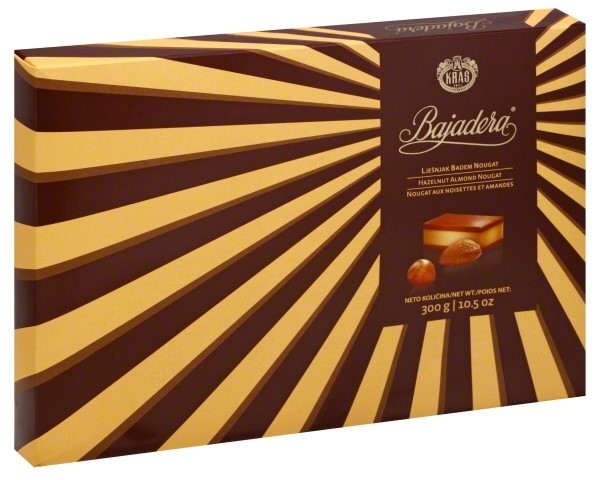
Bajadera - one of the most popular products made by Zagreb-based chocolate and confectionery manufacturers Kraš
Zagreb-based chocolate and confectionery manufacturers Kraš, Požega-based confectionery and drinks manufacturers Zvečevo, oil company INA, Koprivnica-based food company Podravka and Koprivnica-based pharmaceuticals company Belupo, vitamin drink Cedevita, Varaždin-based food company Vindija, Vukovar shoemakers Borovo, Varaždin clothes designers and manufacturers Varteks and multi-use condiment Vegeta are just some of the strongest Croatian brands that are present on the map. You are still likely to see these brand names on many Croatian high streets. Some have succeeded in reaching further into international markets since Croatian independence.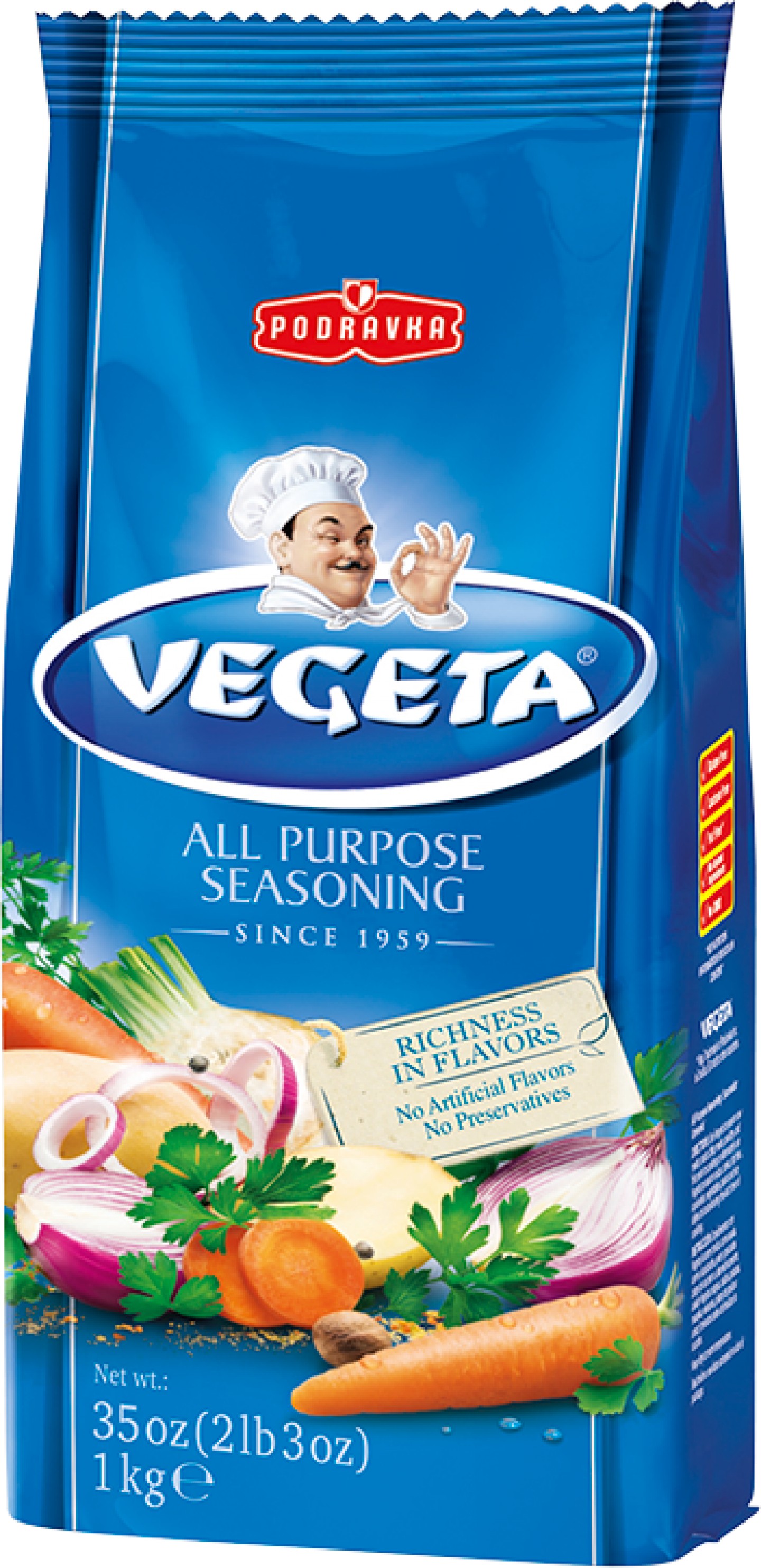 Croatian-made condiment Vegeta is sold all over the world
Croatian-made condiment Vegeta is sold all over the world
Of course, not every brand visible on the map of Yugoslavia production has fared so well. In their coverage of the map, Ri.portal reminds that “Some of the Yugoslav products were used by literally the whole world - ships, cars, planes, trucks, weapons and even computers were produced... However, many of these companies no longer exist or are bankrupt.”
In their coverage of the map, Bosnian website Klix reminds that Croatian shipyards Uljanik in Pula and 3 Maj in Rijeka were at world level and produced large ships for customers from all over the world. Split-based shipyard Brodosplit, which can also be seen on the map, survives to this day.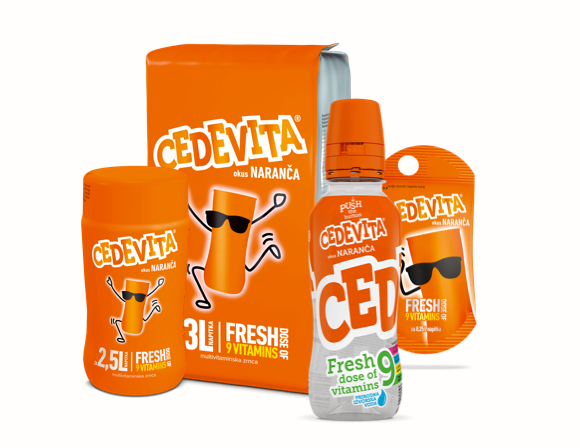
Croatian vitamin drink Cedevita comes in a range of flavours
Ri.portal goes on to remember that Yugoslavia was one of only five countries in Europe at the time that manufactured its own computers. “Probably the most famous is the Galaxy, while the first computer produced was the CER-10,” they say. One of the Yugoslav computer makers on the map, popular in the late 1970s, was Digitron, based in Buje in Istria.
Sadly, not all of the strongest Croatian brands have made it until today. Famous tractor and agriculture equipment manufacturer Tomo Vinković of Bjelovar is no longer in production. Their famously-reliable machines are much in-demand on the secondhand market. Two new tractor manufacturers, Hittner doo and the Prima tractor factory still make tractors in Bjelovar.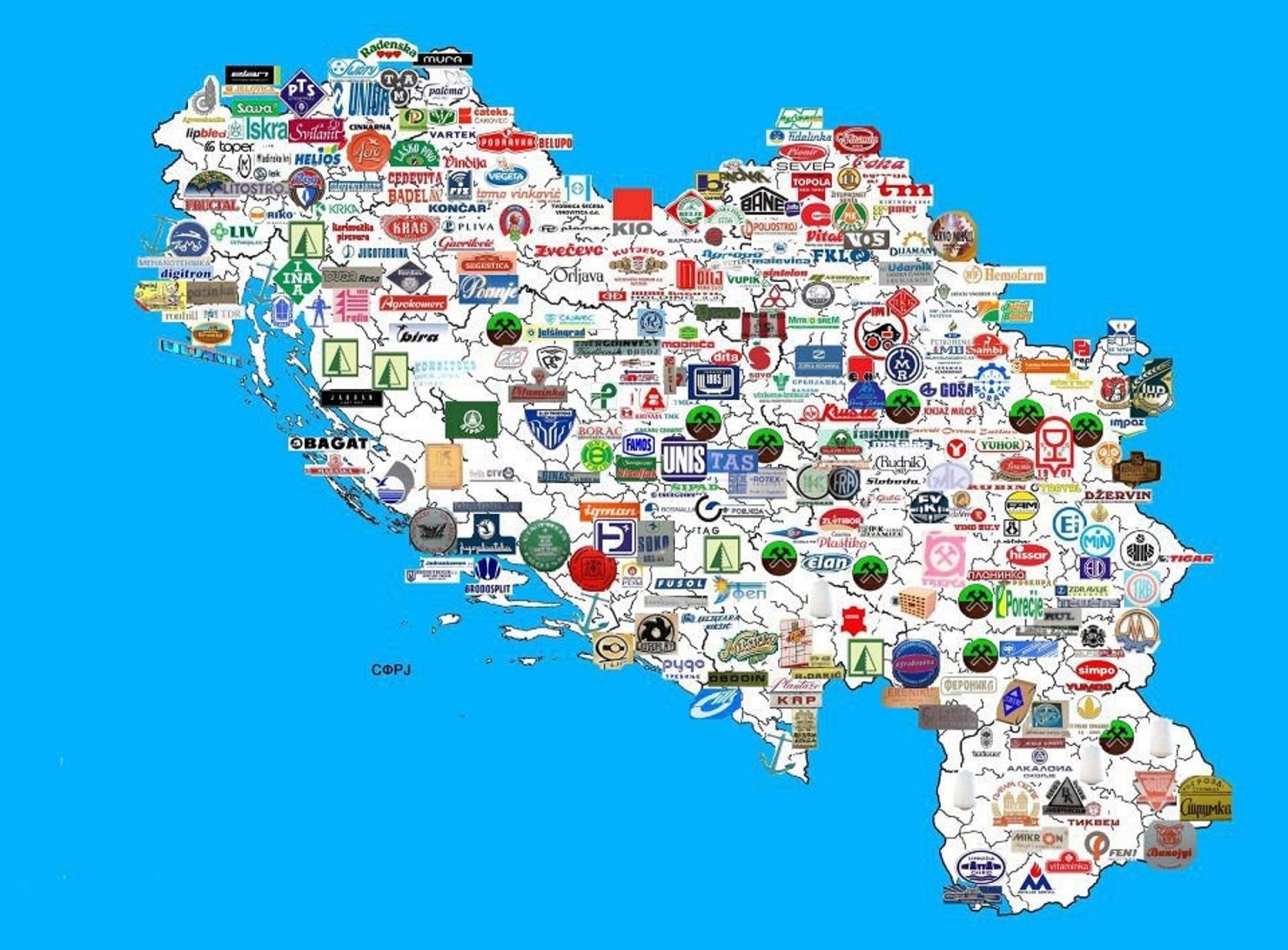
Croatia Agriculture and Food Exports Jump in 2020, Imports Fall
December 19, 2020 – A surprising success story in a difficult year as Croatia agriculture and food exports jump in 2020, while imports of the same have fallen
Good news from any place is welcome in this most difficult of years. According to provisional data from the country's Central Bureau of Statistics, the total value of Croatia agriculture and food exports in the period from January to September 2020 amounted to 1.7 billion Euros, an increase of 5 percent from the same period in 2019. Within the same period, the value of agricultural and food imports into Croatia was 2.5 billion Euros, a decline of 7.3 percent from last year.
The success of Croatia agriculture and food exports in the period means that the country's trade deficit has decreased by huge 26.6 percent compared to the same period last year. With this year's findings taken into account, the trade deficit now stands at 758.8 million Euros.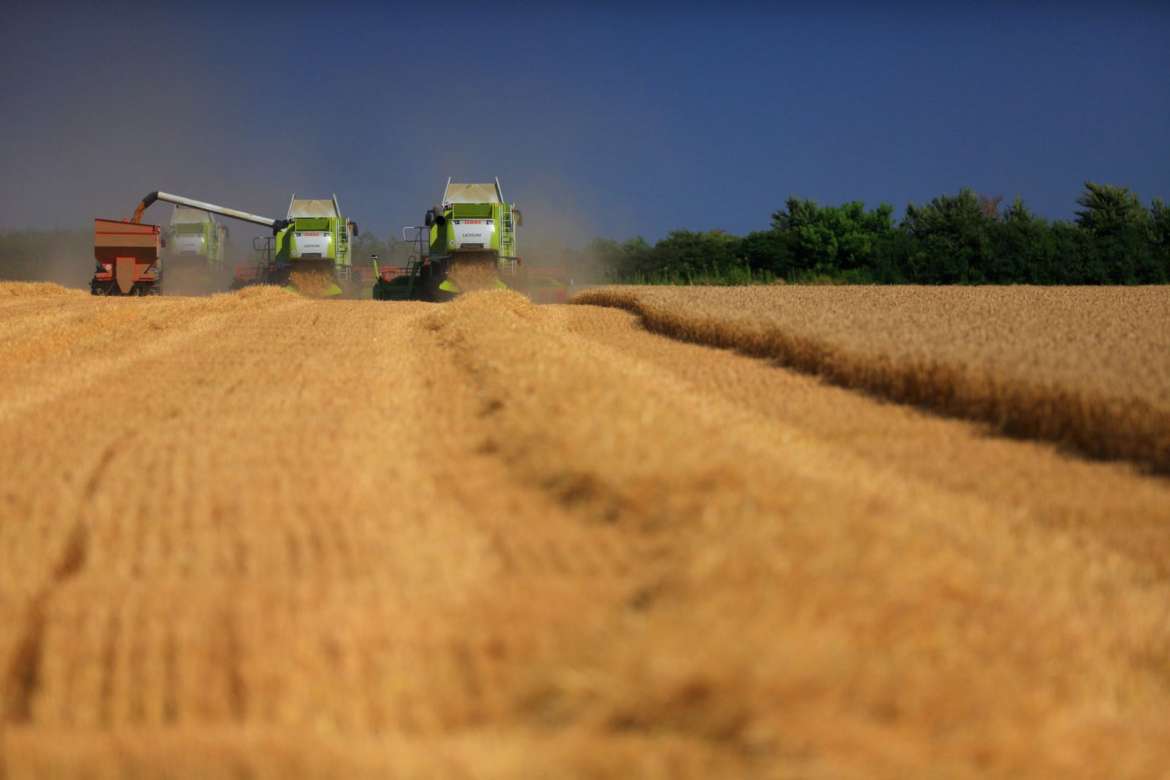 © Romulić & Stojčić
© Romulić & Stojčić
Croatia agriculture and food exports covered 69 percent of total imports this year, an increase of 8.11 percent. A total of 15.86 percent of all exports from the country come from the Croatia agriculture and food exports sector.
The most important item of production within the sector is corn, which accounts for 5.4 percent of all Croatia agriculture and food exports.
From January to September 2020, the most significant products in exports were: cereals (205.4 million Euros – a growth of a huge 62.6 million Euros); various food products (168.1 million Euros – including manufactured/processed foods like sauces, soups, ice cream, sugar products); fish and other seafood (a huge 147.4 million Euros – showing a growth of 14.5 million Euros); cereals, flour, starch or milk products; confectionery products, including chocolate (135.9 million Euros – a growth of 13.8 million Euros), and tobacco-related products (122.6 million Euros). TCN recently took a closer look at the successful and well-established Croatian chocolate industry
Other successes within 2020 Croatia agriculture and food exports were live animals, with an increase of 10.1 million Euros, and the residue and waste of the food industry, which is exported to go into prepared animal foods. The latter saw an increase of 8.6 million Euros.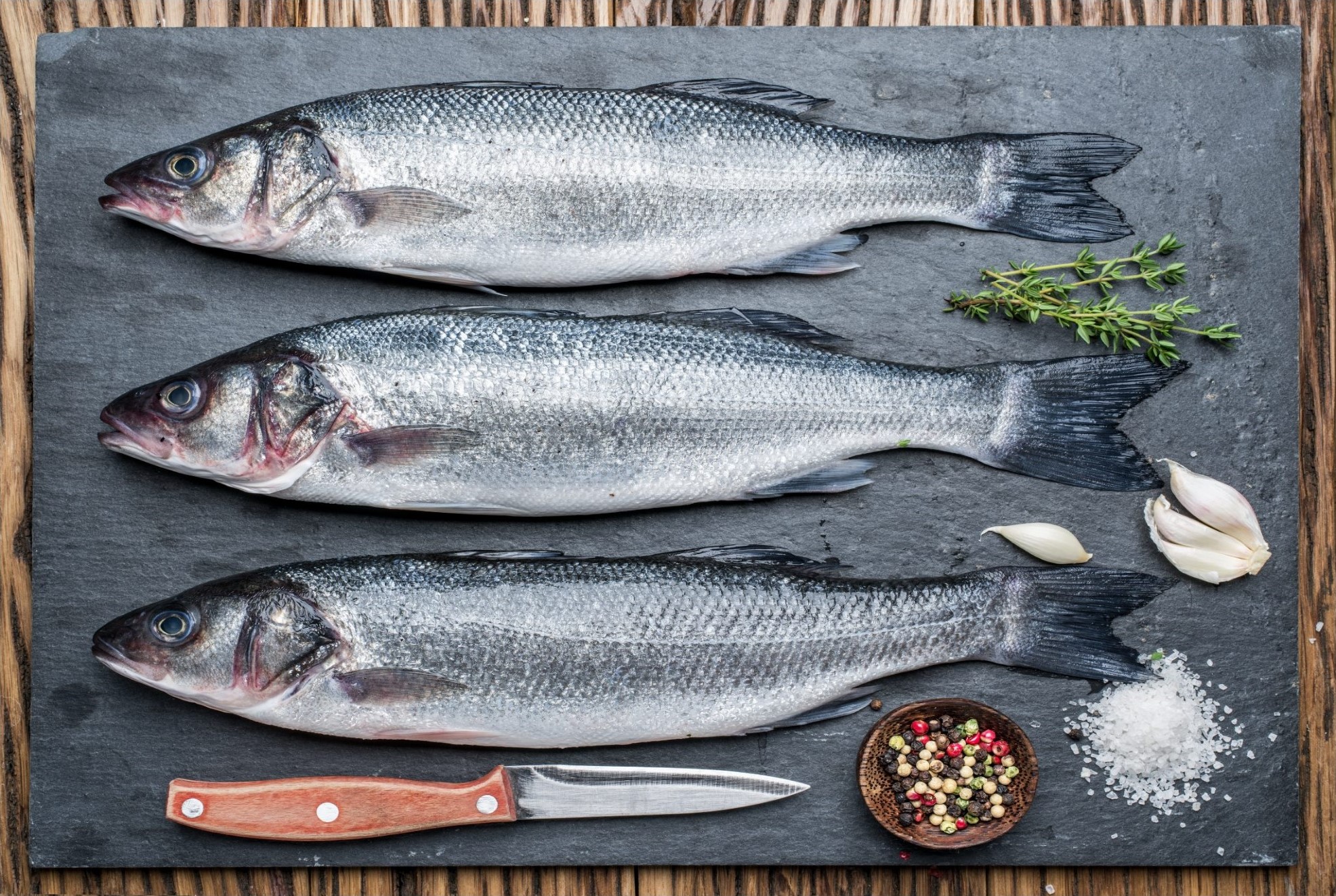
So far this year, Italy was one of the most important destinations for Croatia agriculture and food exports. Their total consumption of Croatia agriculture and food exports was 300.8 million Euros, which amounts to 17.76 percent of Croatia's exports in the sector. Croatia agriculture and food exports to Italy increased by 21.9 percent this year, while imports from Italy to Croatia in the same period was 263 million Euros, a decrease of 16.6 percent on 2019. This creates a surplus of 37.6 million Euros.
The most important Croatia agriculture and food exports to Italy are maize, wheat and soybeans, tobacco-related products, sea bass (brancin) and bream (orada).
For the last five years, Croatia agriculture and food exports top consumer has been Germany. For the past seven years, Germany has also been the country from which Croatia has imported the most.
Nigerian in Zagreb Opens Restaurant: "People With No Money Eat Free"
A touch of Africa in the heart of Zagreb, more precisely on Ilica 73 in central Zagreb, as Okoli Kikelomo from Nigeria officially opens her new (well, sort of) African restaurant ''MamaVeek's Kitchen''. ''We don't have a pricelist, people who don't have any money can come and eat for free,'' stated the warm-hearted Okoli.
As 24sata/Anamarija Milos writes on the 6th of April, 2019, the African bistro ''MamaVeek's Kitchen'' which moved from Ilica 69 to Ilica 73, was initially opened six years ago by Okoli Kikelomo who came to Croatia from Nigeria in search of a better life than what she felt Nigeria could offer her.
The opening of her new-yet-old restaurant officially began at 16:00 and Okoli said that there is no price list in her restaurant, people are free to leave donations, and those who don't have any money are more than welcome to come and eat for free, she also added that she would continue to serve only traditional African recipes in her kitchen.
Okoli arrived here in Croatia six years ago in search of a better life, and since then, she hasn't stopped - she founded a humanitarian association, organises various art workshops, she volunteers, but in spite of all her many activities, this ''jack of all trades'' is mostly devoted to cooking African food at ''MamaVeek's Kitchen''.
Okoli is a talented cook, and she learned it all from her grandmother, and she made her very own first dish eight years ago. Her passion for African cuisine is so strong that her desire is to transfer it to her visitors through her hard work in her African restaurant. The food served there is mostly bought at the Zagreb's Dolac market, but the exotic spices with which she enrich her traditional African dishes are sent to her from her mother who is back in Nigeria.
Despite her love of African cuisine, Okoli has taken on the task of learning to prepare and cook Croatian cuisine.
"In these past six years, I've learned how to prepare sarma and tripe in Croatia. I know how to make fish paprikaš too, but for my guests, especially for the opening, I'll prepare an African soup with meat and a special fish dish,'' Okoli noted.
Make sure to stay up to date by following our dedicated lifestyle page. If it's just the capital you're interested in, give Total Zagreb a follow.
Click here for the original article by Anamarija Milos for 24sata
First Croatian Olive Oil for Children - Brachia Kids
There's no denying that Croatian olive oil is second to none, and we're not the only ones who think it. Croatian produce has won award after award and the long coastal traditions of olive growing, picking and harvesting in Croatia are worthy of just as much praise as the final results of that hard work are.
As Morski writes on thr 4th of April, 2019, the respected Brač brand of olive oil, Brachia, has launched Brachia Kids, the first Croatian olive oil made just for children of kindergarten and elementary school age, reports Journal.hr.
''Brachia Kids brings the fresh and intriguing taste of organic olive cultivation from ecological [olive] growing from the island of Brač. These flavours are ideal for children when it comes to falling in love with the taste of olive oil. This new product is intended for parents who understand the healing properties and the great nutritional value(s) of olive oil, and who want to introduce it to their children's diet,'' said Leopold Botteri, the co-manager of the Brachia cooperative.
Part of the main role in popularising the consumption of olive oil for children will also be played by its attractive packaging, which has been made by Izvorka Jurić and Jurica Kos.
''We've designed the packaging so that the product is attractive to children, fun to use, and also educational, in order to develop their awareness of the importance of the regular use of olive oil. The body of a glass vial (0.25 dcl) has been partially placed in a box that, together with the black tip of the bottle, forms a crayon, and within which six crayons are actually housed. Following the dissolution of the box, there is a fun colouring book with illustrations of olive trees and leaves and various tasks for children to complete. Olive oil nourishes the body, and the puzzle and colouring on the packaging, acts as food for the brain. Together, they make a complete product for the healthy development of children,'' explained packaging designer Izvorka Jurić.
In addition to the premium olive oil of Brachia Maslina and the latest Brachia Kids product - Izvorka Jurić has designed products for the lines of Brachia sort oils, ecoBrachia and Brachia & Friends. All of these products, including Brachia Kids' olive oil for children, are now available for purchase in UJE stores across the Republic of Croatia.
Make sure to follow our dedicated Made in Croatia page for much more.
Potential for Croatian Producers as Prosciutto Exports Continue to Grow
As Morski writes on the 3rd of April, 2019, what has been happening with prosciutto for the past three to four years is truly spectacular. Due to its superior properties and specific traditional production technology, Croatian prosciutto producers have stumbled upon some great export potential and even more potential for the product's better placement in Croatian tourism through the country's already rich gastronomic offer.
When compared to five years ago in 2014, exports have increased in quantity by fourteen times, and perhaps most importantly, in value eleven times. Approximately 88 percent of total exports go to the EU market, and just over eleven percent go to CEFTA countries.
''The latest 2018 statistics show an increase in exports of shank and aitchbone products by nearly sixty percent, but unfortunately, we still don't even cover a third of imports. We need new investments and we need to invest in new prosciutto production capacities to double our production, and 700,000 pieces annually to at least meet the needs of the domestic market,'' said Dragan Kovačević, vice president of the Croatian Chamber of Economy for Agriculture and Tourism, at a press conference announcing the event Days of Croatian Prosciutto.
Ante Madir, Executive Director of the "Hrvatsko pršuta" (Croatian prosciutto) cluster, which brings together producers responsible for 95 percent of the total prosciutto production in the Republic of Croatia, explained more precisely what awaits Croatia on the fifth Days of Croatian prosciutto, which is being held from the 26th to the 27th of April at the Zagreb International Hotel this year.
''On the first day, we'll have a manifestation with round tables and workshops, the expert part of the gathering, and the second day at Ban Jelačić Square, there'll be a show-selling part where people can taste our prosciutto,'' Madir said, adding that they decided on Zagreb because quite a large market and a high demand for the product can be found in the Croatian capital.
"What's been happening with prosciutto over the past three to four years is truly spectacular. The signs of protection (special labels) are our tickets to the wider European Union market, that's very important for being able to [have our products] arrive to shop shelves. In Croatia, we still need to work on presenting [our products] to consumers to have them pay more money for something which is domestic and specific,'' said Igor Miljak, chairman of the PPK Karlovac meat industry, stressing that Croatia still doesn't have key gastro brands that are recognised on the European or global market, but it definitely does have the quality to be able to cope well with the competition.
Ana Babić from Voštane pršut, a representative of the Association of Dalmatian Prosciutto, explained the difference between Dalmatian and Istrian, or more specifically Krk prosciutto.
''Dalmatian prosciutto is smoked, while Istrian and Krk prosciutto isn't. There are no additives or preservatives in its production, and the process itself lasts for at least a year,'' Babić explained, adding that the tradition of Dalmatian prosciutto production draws its roots from as far back as ancient Roman times.
Drago Pletikosa of Belcrotrade and the president of the Association of Drniš pršut stressed that Drniš prosciutto is a little and is therefore certified, although there is no difference between Drniš and Dalmatian prosciutto when it comes to the production process itself.
''Last year, we imported 3,848 tons of products worth more than 21.5 million euros and exported 1.113 tons (6.5 million euros). Compared to 2014, exports have increased in quantity fourteen times, and by value eleven times. Approximately 88 percent of our total exports go to the EU market, and just over eleven percent go to CEFTA countries. We export the most to Slovenia (35.5 percent of total exports) and to Italy (28.1 percent),'' stated Pletikosa.
''This event brings together and promotes prosciutto producers from all over the country, whose products are protected by a stamp of designation of origin, and labels of geographical origin (Krk, Dalmatian and Drniš prosciutto) at the EU level,'' stated the Croatian Chamber of Commerce (HGK).
Quality labels for consumers guarantee the purchase of authentic and properly controlled products, with recognised quality and a local origin. Protecting products without educating consumers and business partners about its proper valuation has no great benefit. Therefore, this event contributes to the strengthening of the recognisability of these Croatian meat products with higher added value and a better market positioning, all with the aim of developing the wider Croatian economy.
Make sure to follow our dedicated business and Made in Croatia pages for much more.
Croatia Spends the Most on Food in the European Union
According to food expenditure statistics, Croatia is still spending significantly more than the European average, with the British paying the least towards food and drink in all of Europe.
As Poslovni Dnevnik writes on the 30th of March, 2019, expenditures for transport of the average Croatian family were equal to the cost of housing and for the first time, they reached fifteen percent of the average household budget. Based on the Household consumption survey, which is otherwise conducted every three years, the Central Bureau of Statistics reported that the average Croatian family spent 82,530 kuna per household in 2017, which is a monthly cost of about 6,800 kuna.
Croatia takes first place when it comes to the amount allocated to food in the household budget, but it is about five percentage points less than ten years ago when every third kuna was spent on food, Večernji list writes. The other countries which follow Croatis are Romania, where 26 percent of the typical household budget goes to food, while in Serbia, which is considered a third country, yet remains an EU candidate, that stands at 22 percent.
According to data on food expenditures, Croatia is still significantly above the European average, where 12 percent of household budgets typically go on food and drink, and in developed western economies, that figure is usually between 7 and 10 percent. The dominance of food expenditures is a feature of poorer countries with lower wages. Food prices in Croatia are similar, if not more expensive than in Western Europe, while salaried employees receive three to four times lower salaries, which ensure a much higher quality of life and go on including things such as outings, recreation, travel, and further education.
In Croatia, there is still one item where the standard of living has remained the same to a certain extent, and that is the typical cost of housing and the consumption of energy, to which 15.7 percent of the household budget goes, while at the EU level, the energy bills and rent account for a much higher 24 percent of the typical household budget. The British pay the leasr for food, and it typically accounts for a mere 7.2 percent of the British household budget, yet on the other hand, 27 percent of a typical British household budget is spent on various housing costs. Only Cyprus, Lithuania and Malta have lower housing costs than Croatia.
When looking at nominal amounts, just a couple of years ago, the average Croatian household spent 21,353 kuna per year on food and drink, of which the highest costs are for meat, costing about 6,700 kuna, and non-alcoholic beverages, costing 1,900 kuna, these beverages were mostly coffee, mineral water and various types of juices. In Croatia, at least according to the latest statistics, there is actually less smoking and drinking going on, and alcohol and cigarettes have fallen below three percent of the typical household budget to 2.9 percent (2,421 kuna per year), for the first time ever.
In Croatia, communication costs continue to above the EU average, on which 2.5 percent of the household budget is spent. Bulgaria and Serbia are the most similar to Croatia in terms of spending, while communication costs in other post-socialist countries is significantly cheaper and accounts for about three percent of the typical household budget. The average Croatian family pays 4,113 kuna annually for telephone services, which is almost twice as much as it allocates for health care services. For transport, about 13,000 kuna is spent annually, while clothing and footwear have about 6,000 kuna spent on them.
Make sure to follow our dedicated lifestyle page for much more.
Dubrovnik's Tourists Spend More Per Day Than in Other Coastal Areas
As Novac writes on the 27th of March, 2019, tourists staying in both hotels and private accommodation in Dubrovnik are on average 42 years of age, of a higher level of education and possess decent paying power. They typically spend 170 euros per day on average, which is 90 euros more than the average stands in seven other coastal Croatian counties, according to a survey taken by TOMAS Dubrovnik 2018.
This research was conducted by Zrinka Marušić from the Institute for Tourism, for the needs of the City of Dubrovnik, only for Dubrovnik, conducted on a sample of 1,600 respondents.
"Dubrovnik attracts a specific sort of guest, due to broadcasting markets that aren't specific to the rest of Croatia. According to the motives of the visits, we can no longer speak of a [typical] holiday destination," Marušić said.
Namely, while visiting Croatia's southernmost city, guests are mostly attracted to new experiences, gastronomy and cultural sights, as well as swimming, local portal Dubrovački vjesnik writes.
According to the survey's data, the average daily spending of stationary guests staying in Dubrovnik is 170 euros, of which about half or 87 euros refers to accommodation, food and drink outside the accommodation facility accounts for 43 euros, culture and entertainment accounts for 14 euros, purchases account for 11 euros, etc.
The biggest spenders are from non European, more distant countries, topped quite unsurprisingly by the Americans, followed by tourists from Australia and from various Asian countries. Two thirds of Dubrovnik's stationary guests arrive in Dubrovnik with their partner, and 86 percent of them who visit the city are doing so for the very first time.
Research has shown that Croatia's long-standing tourism Mecca is a distinct airport destination as more than 85 percent of the respondents arrived by air. As many as 70 percent of the southern Dalmatian city's guests stay from four to seven days.
The city's visitors are most pleased with the beauty of the city, the levels of safety and security, the hospitality, and the typically high quality of the provided accommodation. They are least satisfied, however, with local transportation, shopping opportunities and the intolerable crowding and traffic in public places and on the city's numerous beaches.
The survey also included visitors who arrived in Dubrovnik on a cruise ship and shows that they are on average 49 years old and spend on average 51 euros per day. The most extravagant among them are once again Americans, and the most frugal are our neighbours from across the Adriatic, the Italians.
As many as 92 percent of the tourists asked were visiting Dubrovnik for the very first time, discouragingly, they are mostly ''one-day visitors'' and remain in Dubrovnik for a mere five and a half hours. Most often, they visit sights and eat at restaurants, and these guests are by far the least satisfied with the shopping opportunities and the total lack of organisation of the traffic and the huge crowds.
Make sure to follow our dedicated lifestyle and travel pages for much more. If it's just Dubrovnik you're interested in, give Total Dubrovnik a follow.


